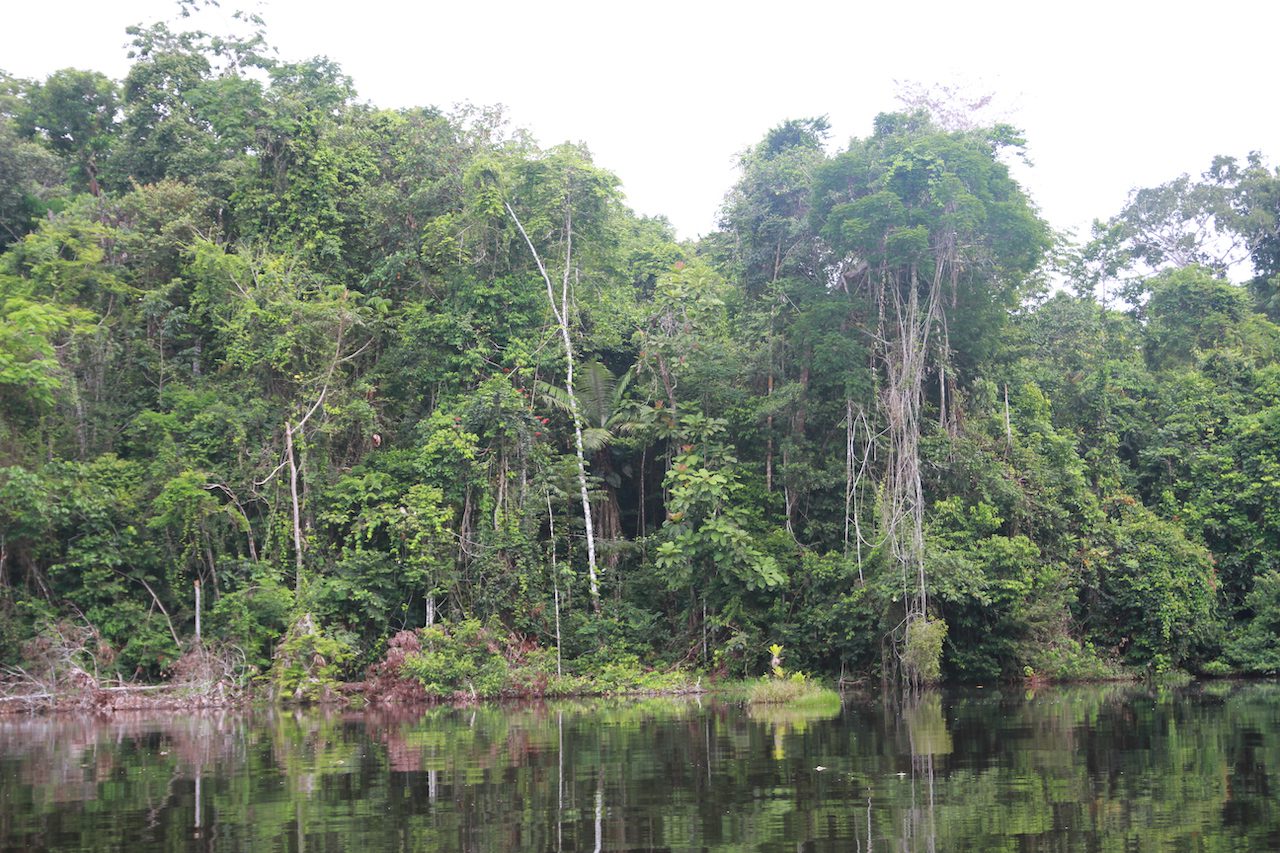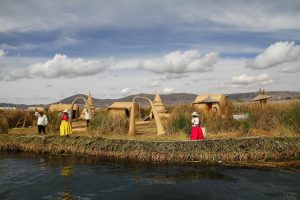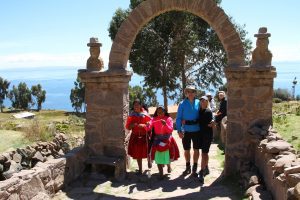🙂 Incredible biodiversity!
🙁 Suspension bridge canopy walk a bit scary!
We were up at 05h45 and headed off on the skiff and started with a fantastic – amazing biodiversity and beauty everywhere. We even spotted a monkey!
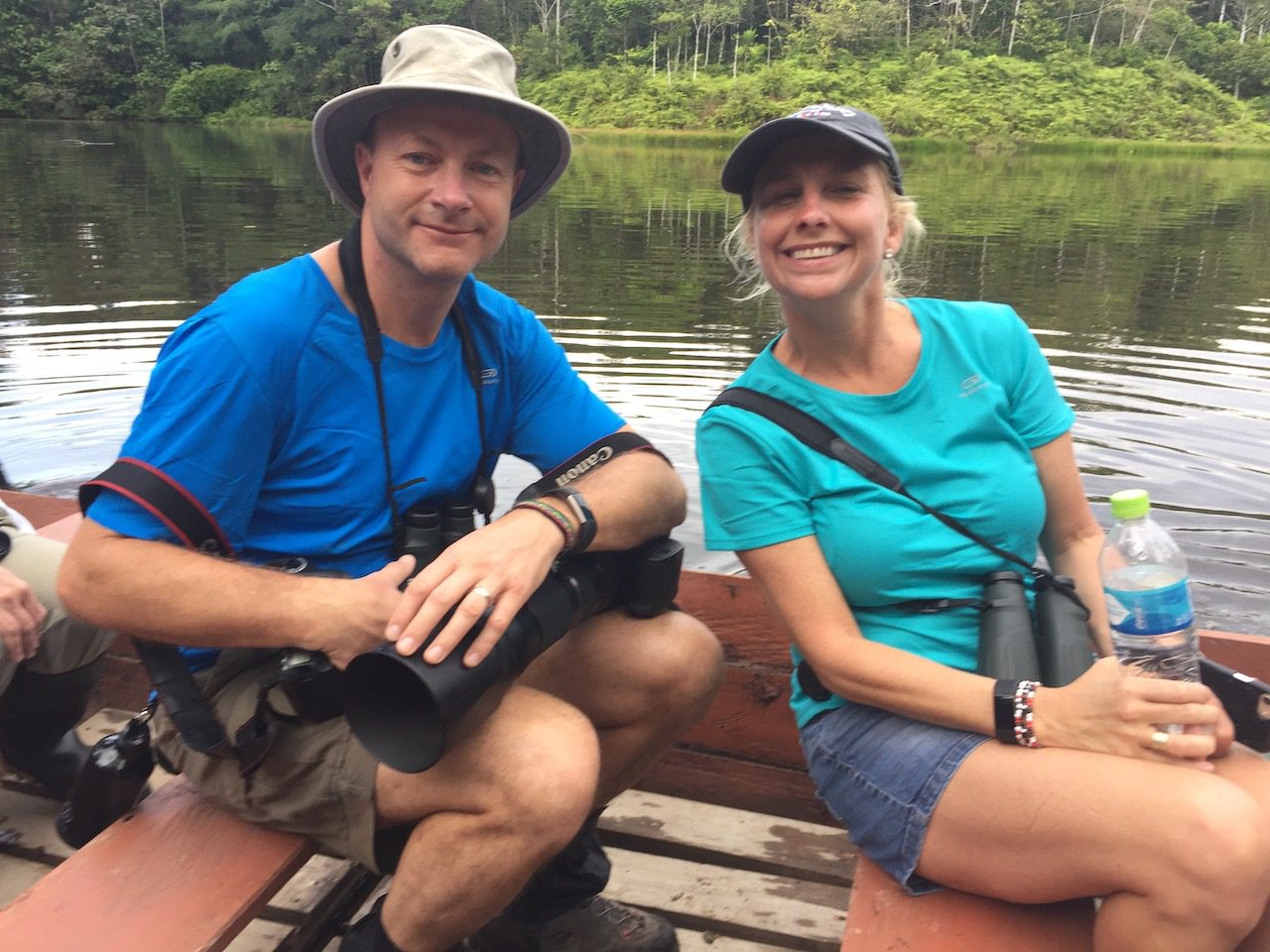
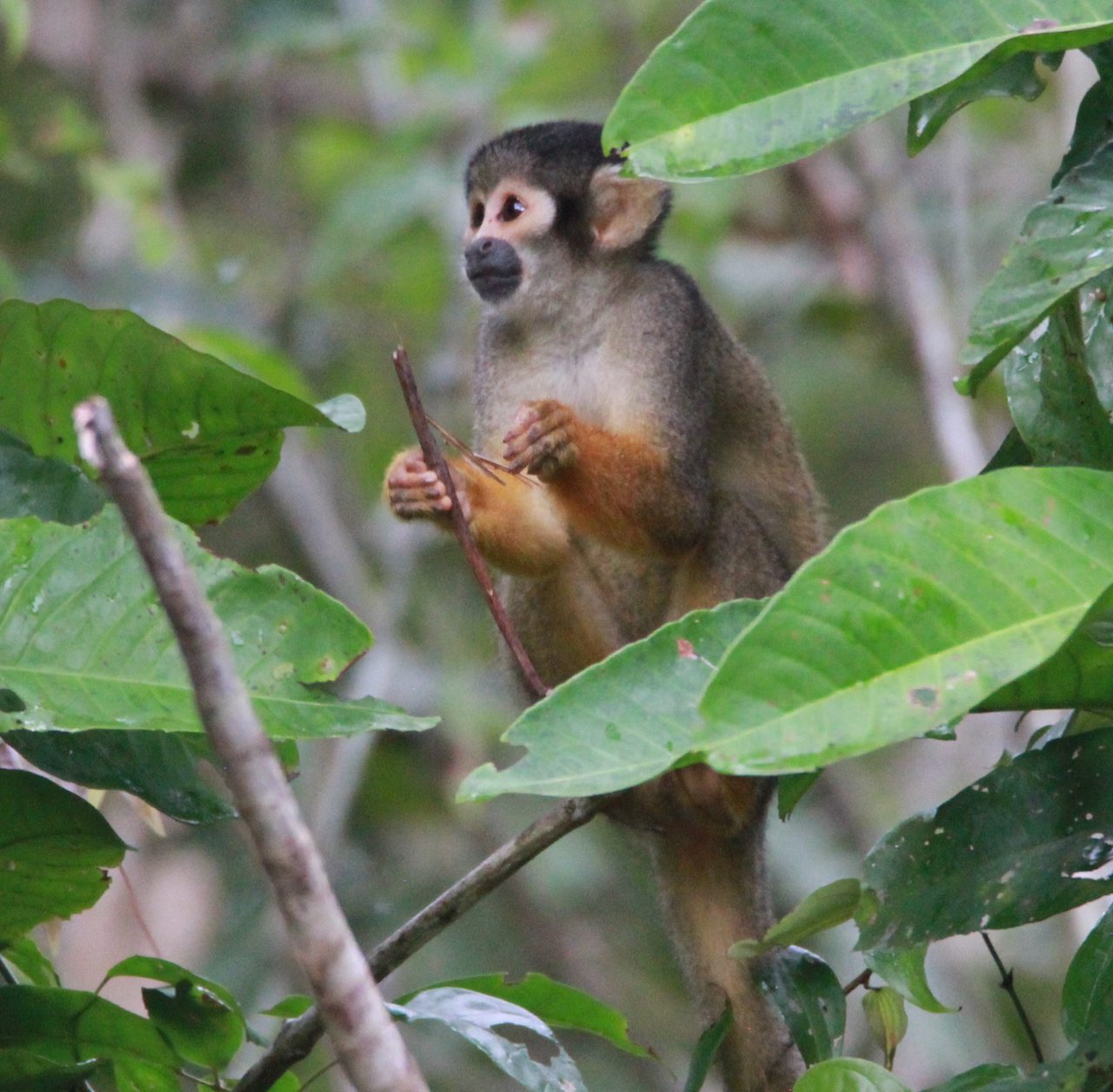
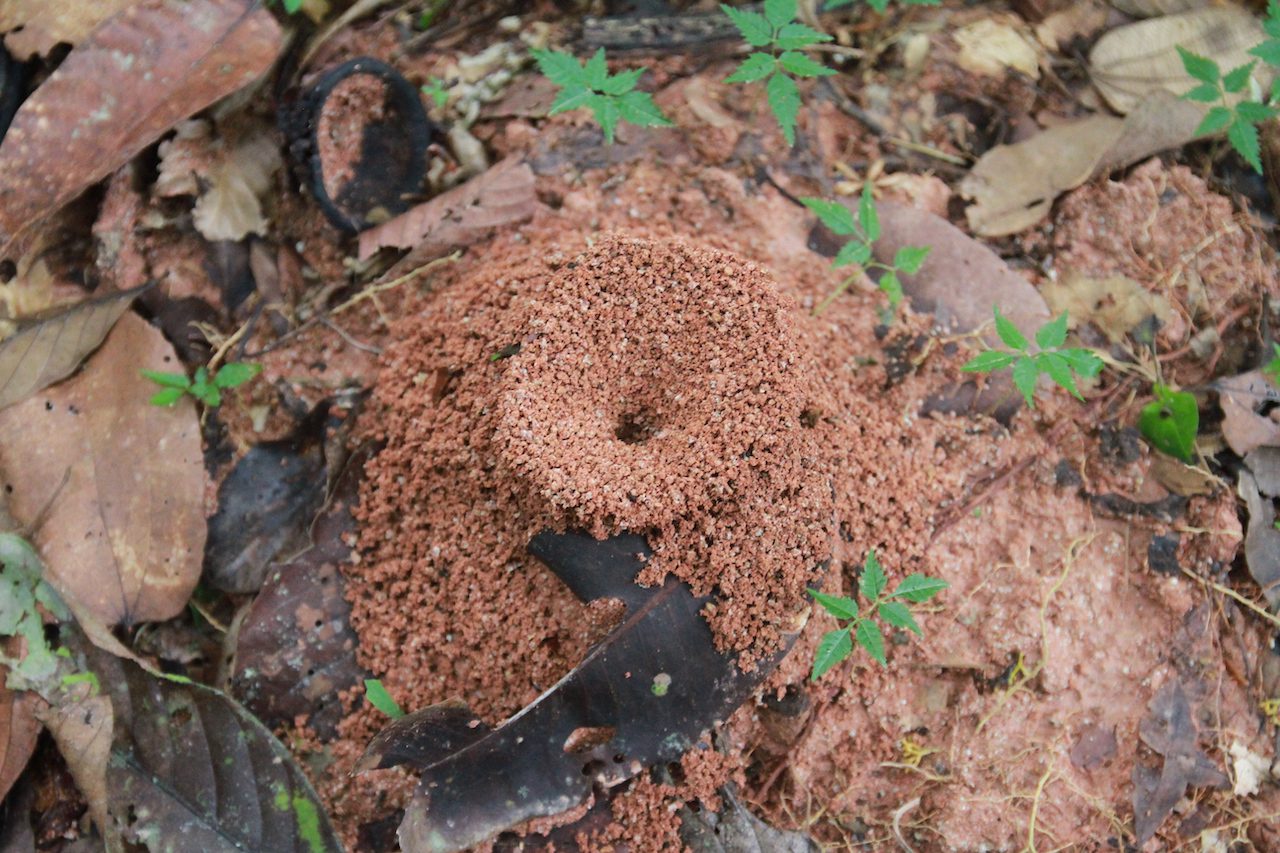
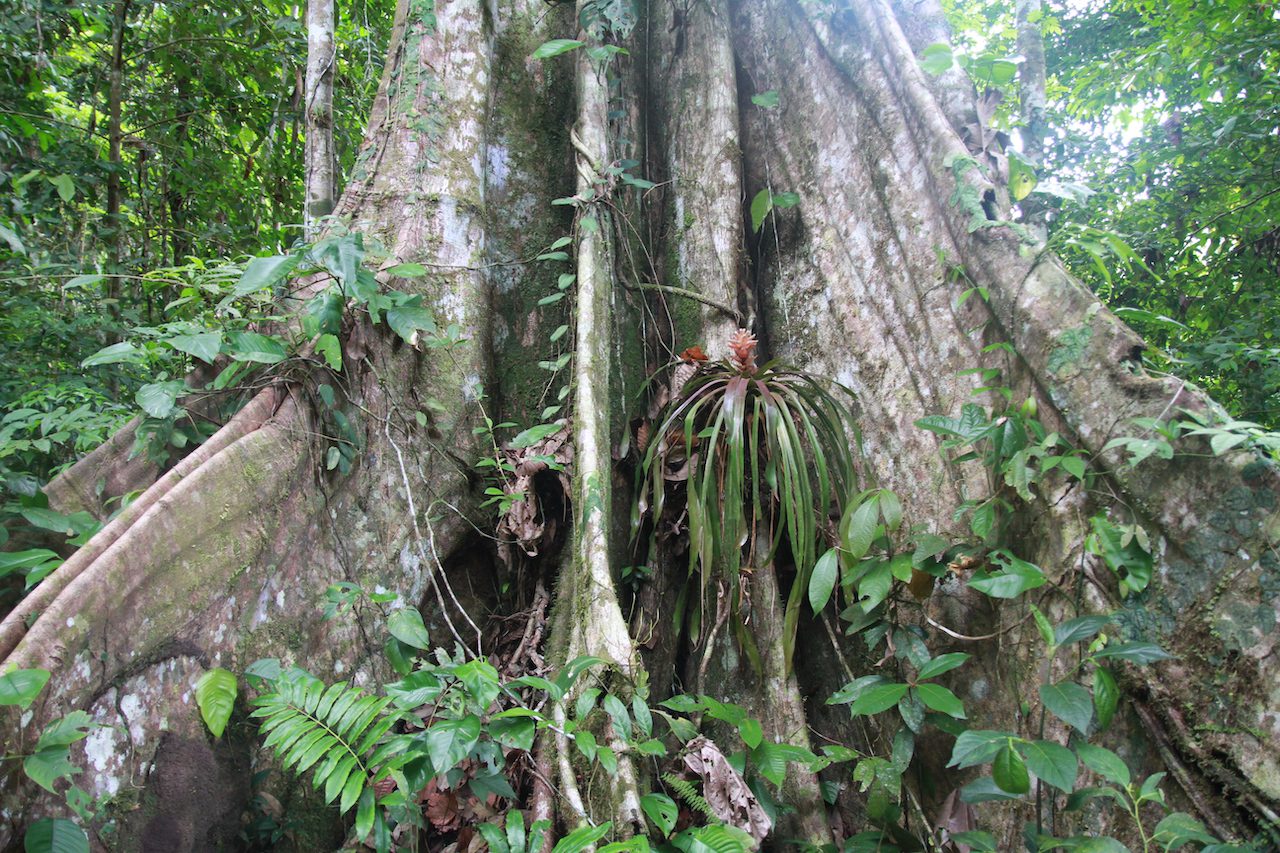
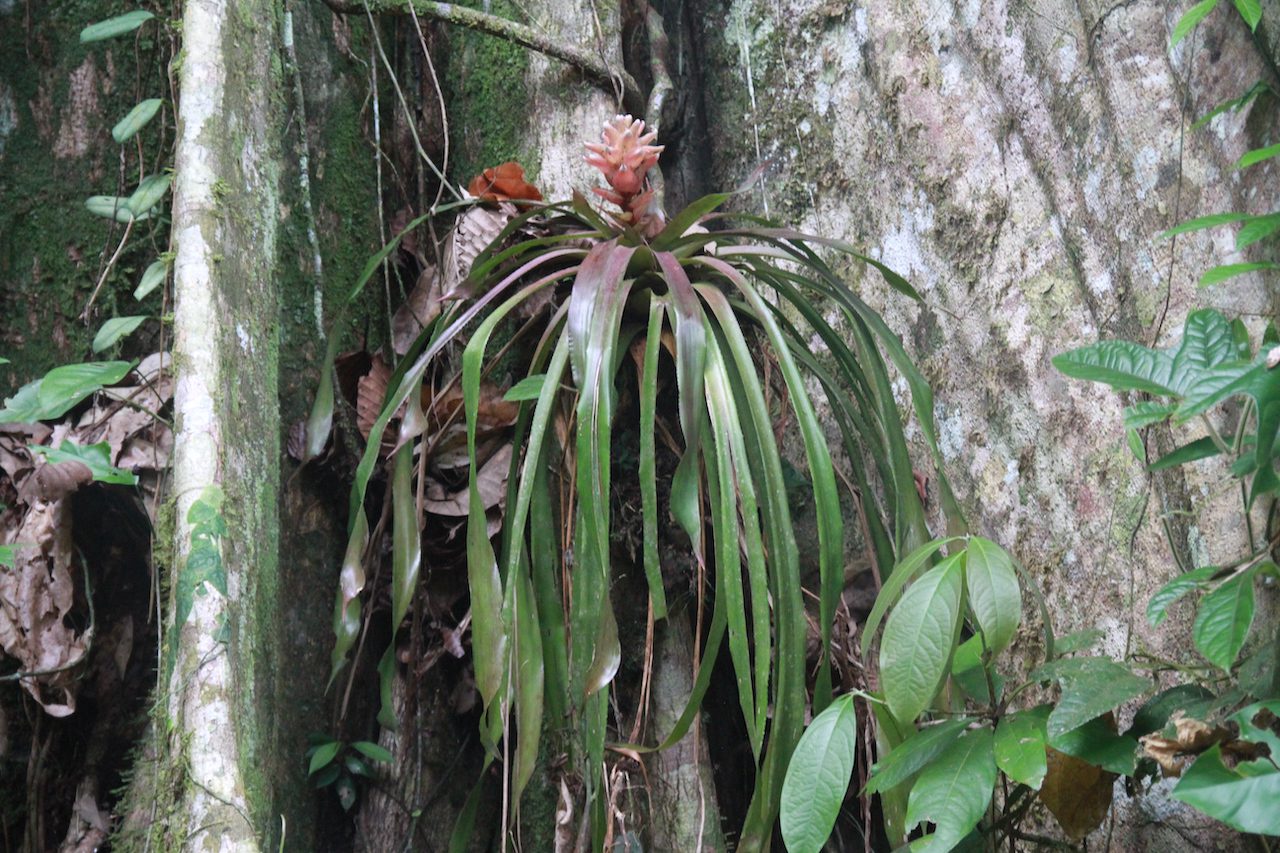

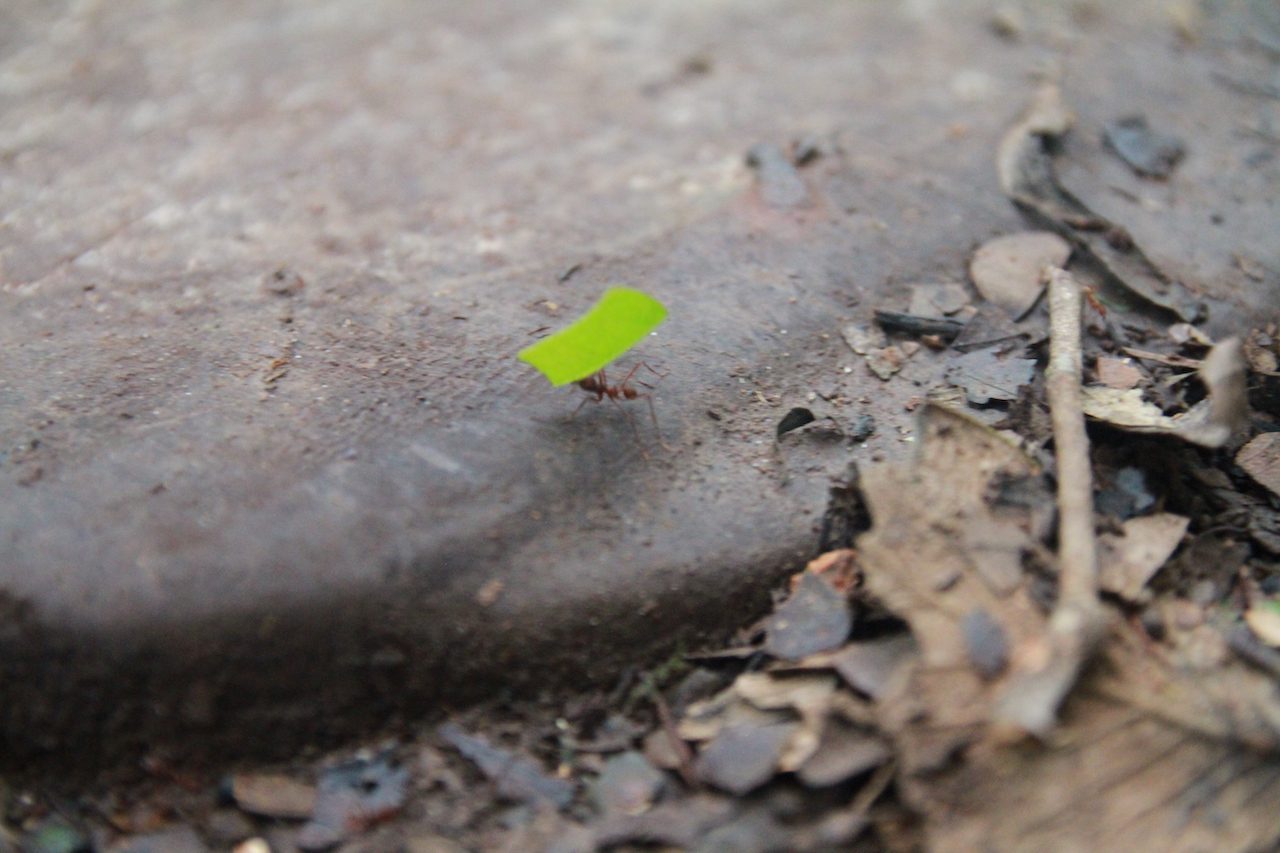
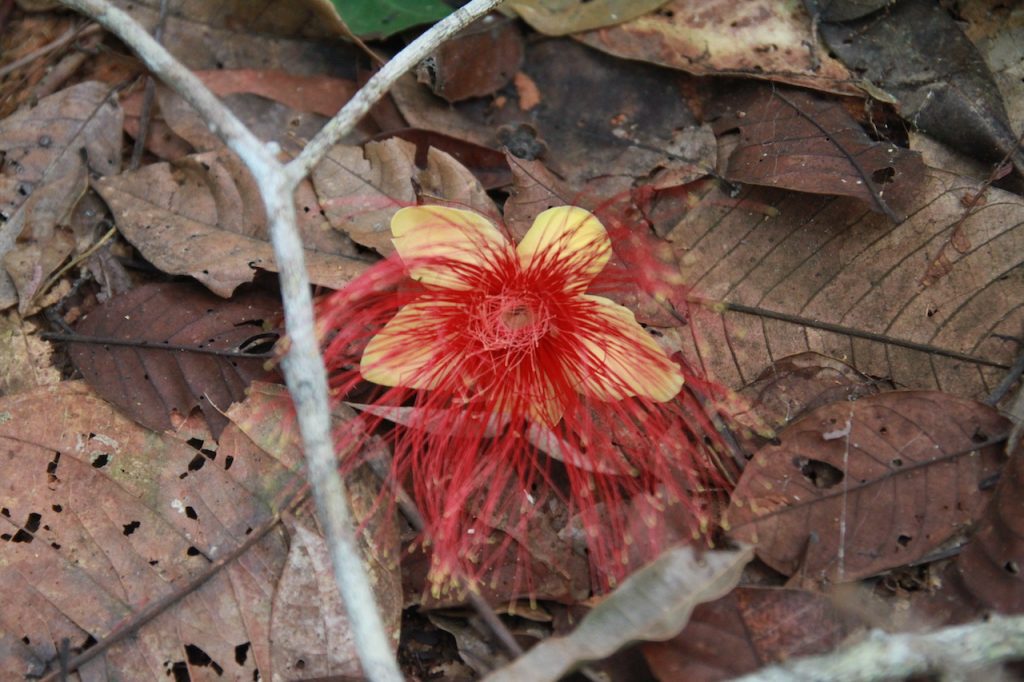
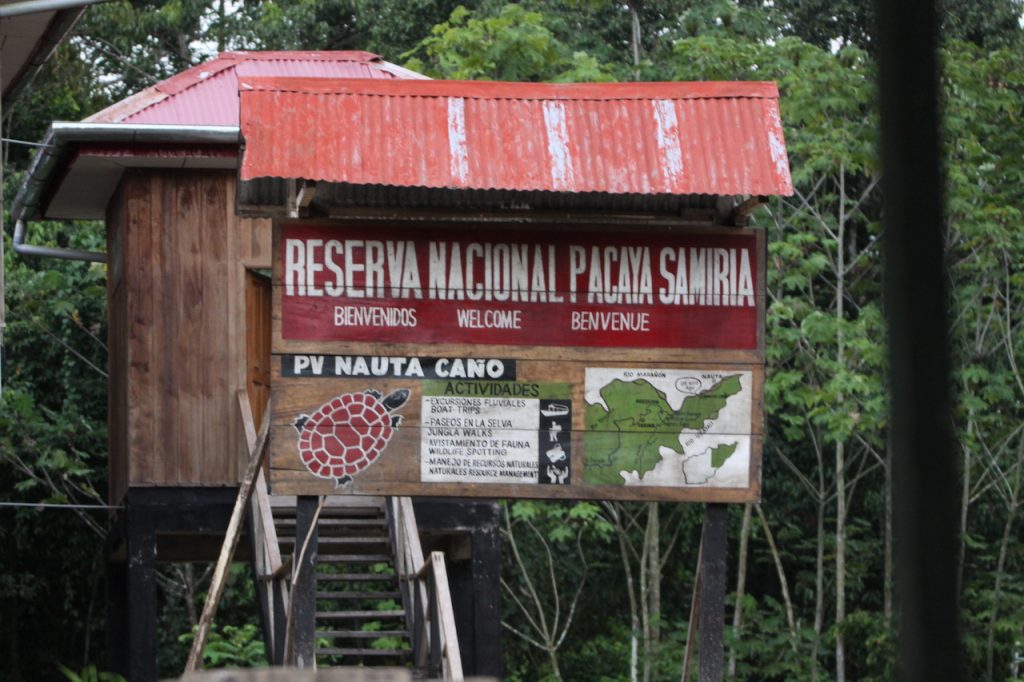


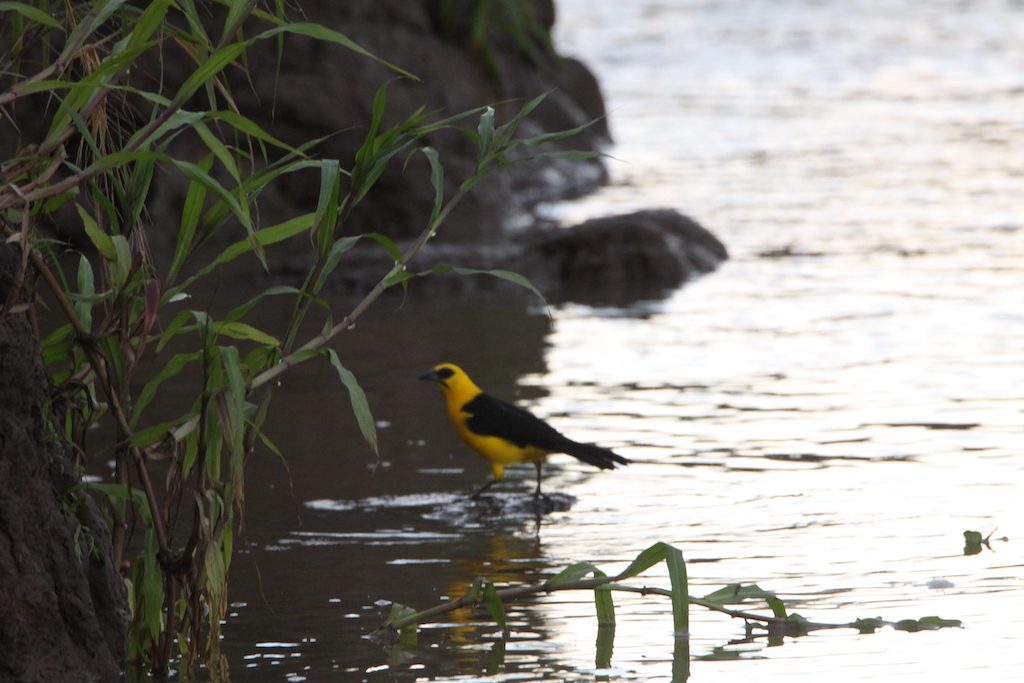
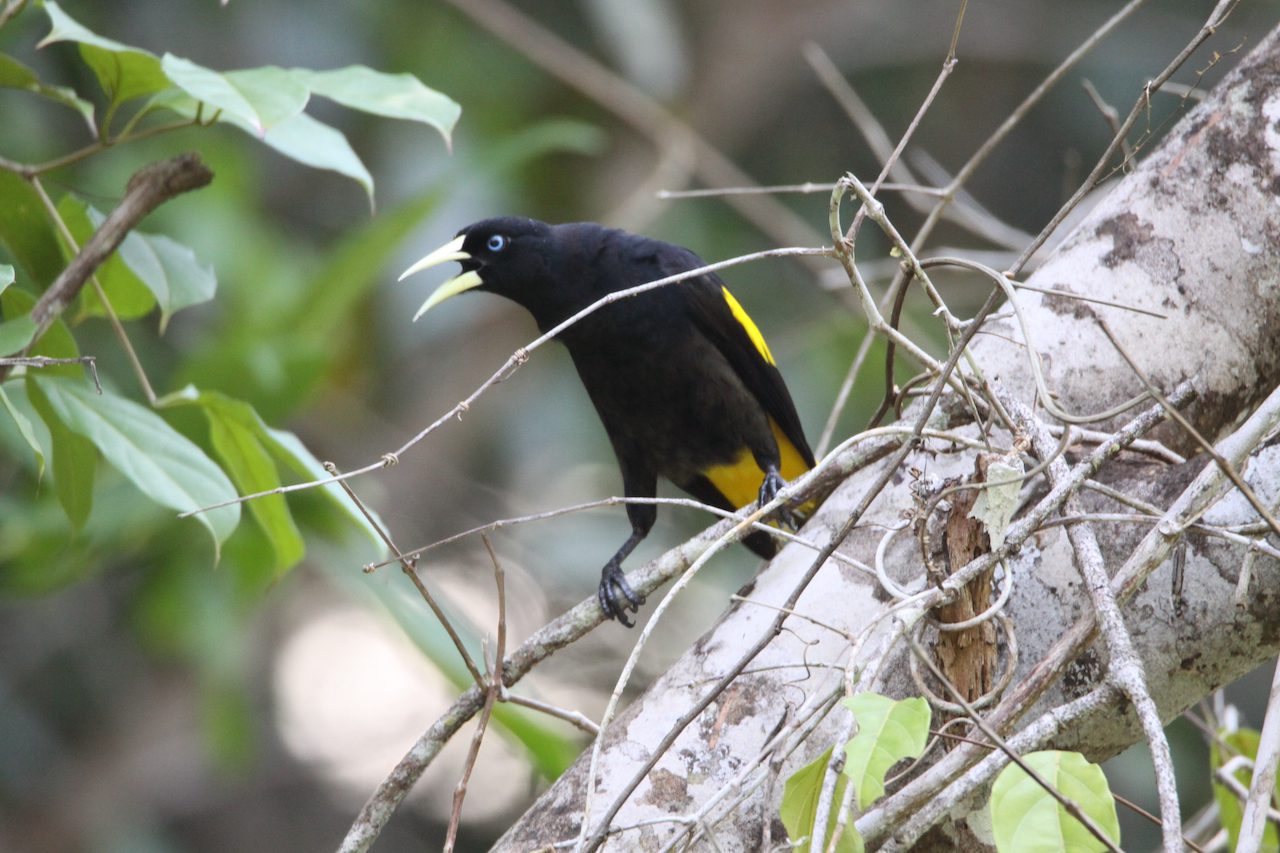
The canopy walk was terrifying (for me anyway) but everyone else enjoyed it tremendously. We had to wear gloves in case of bullet ants.
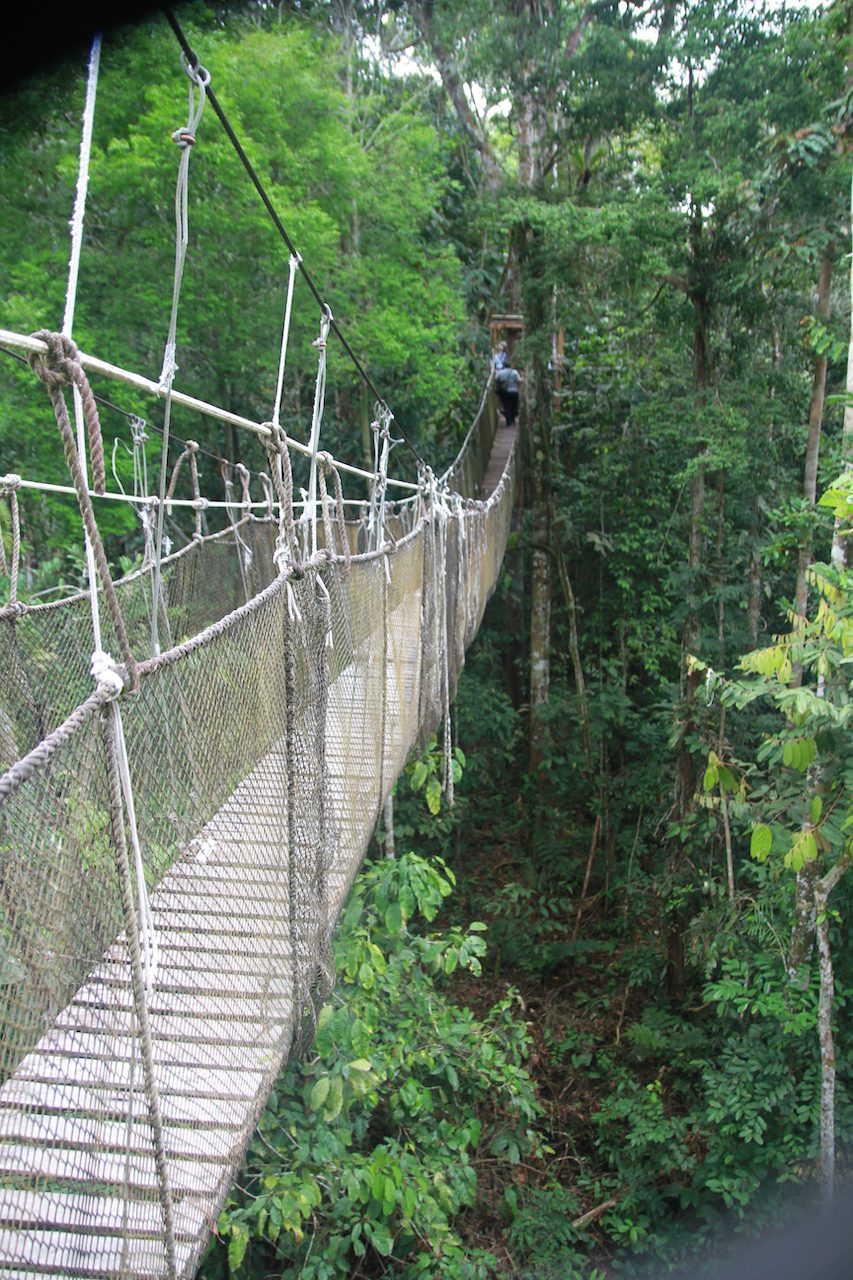

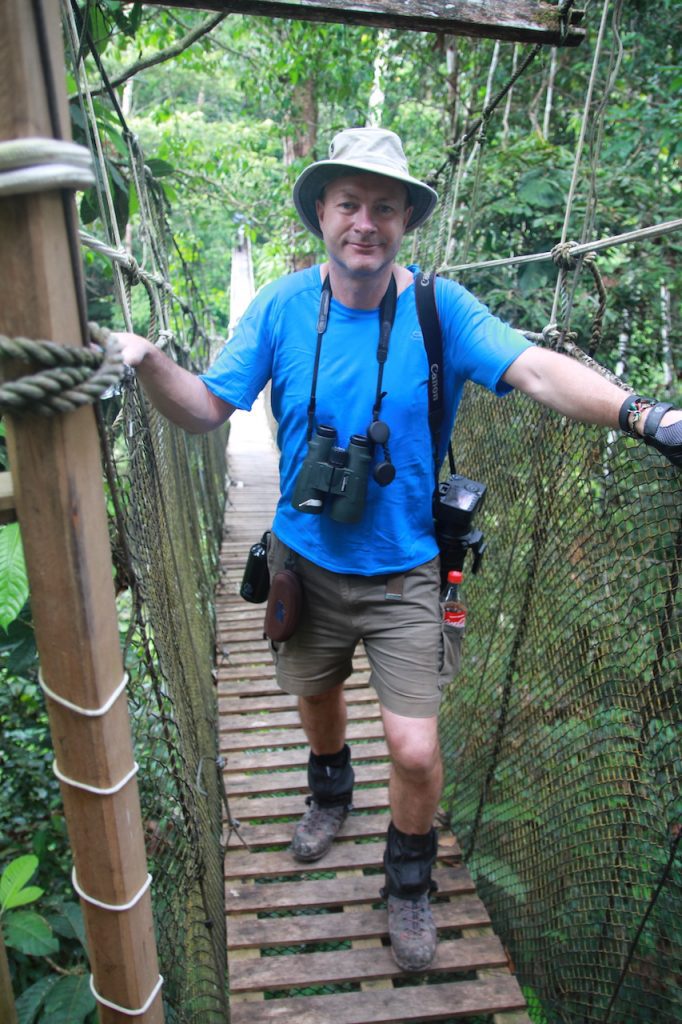
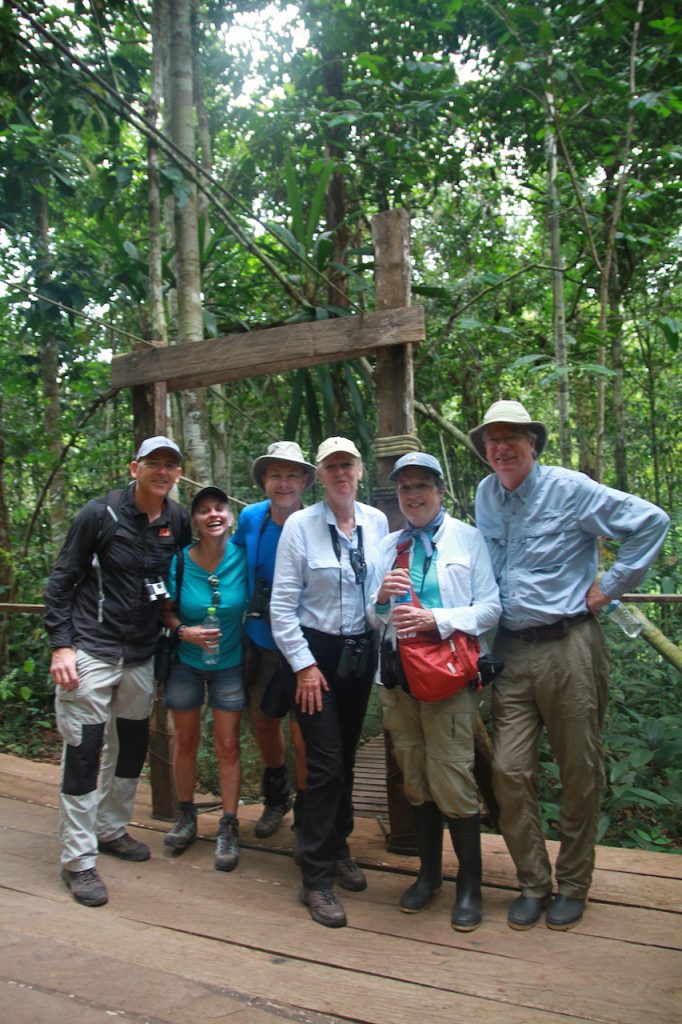
We were then rowed over to a very special floating breakfast – quite stunning.

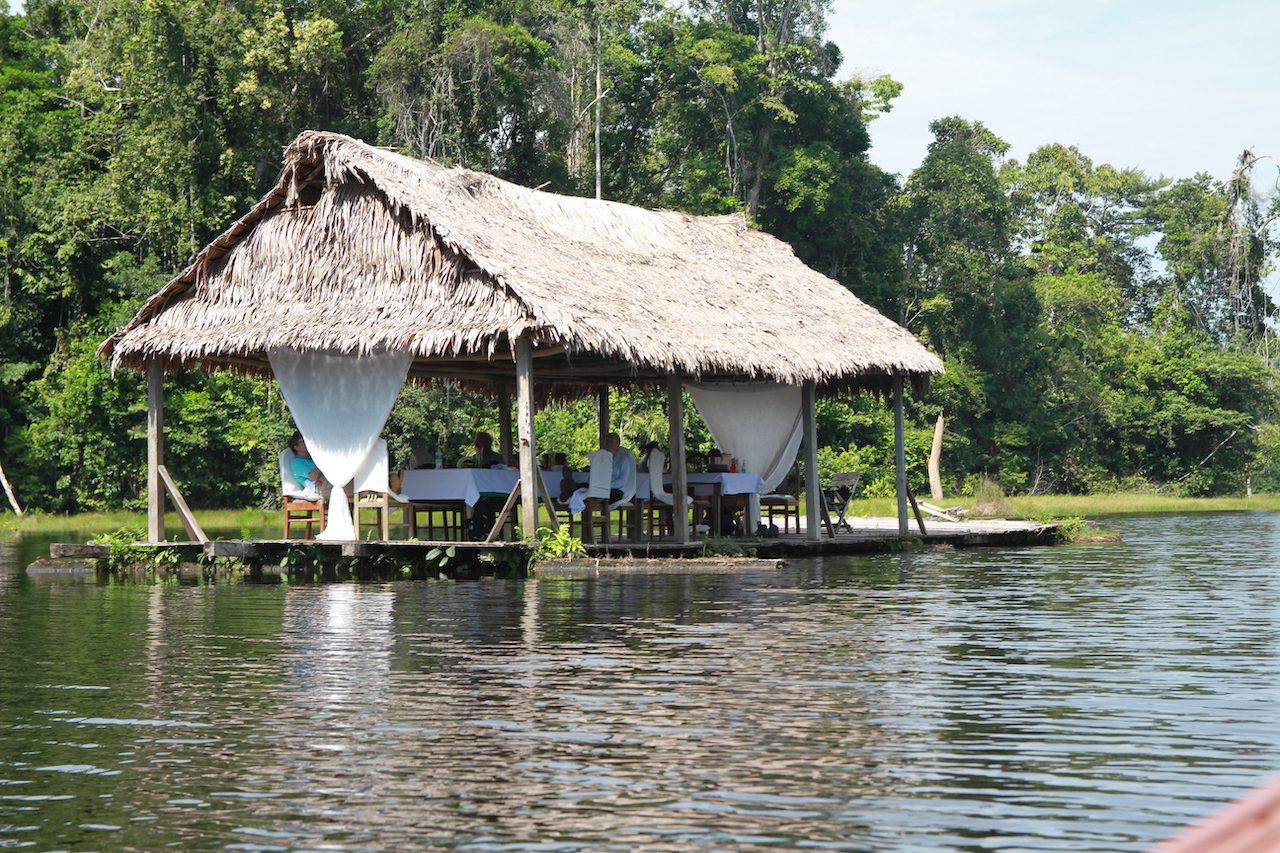
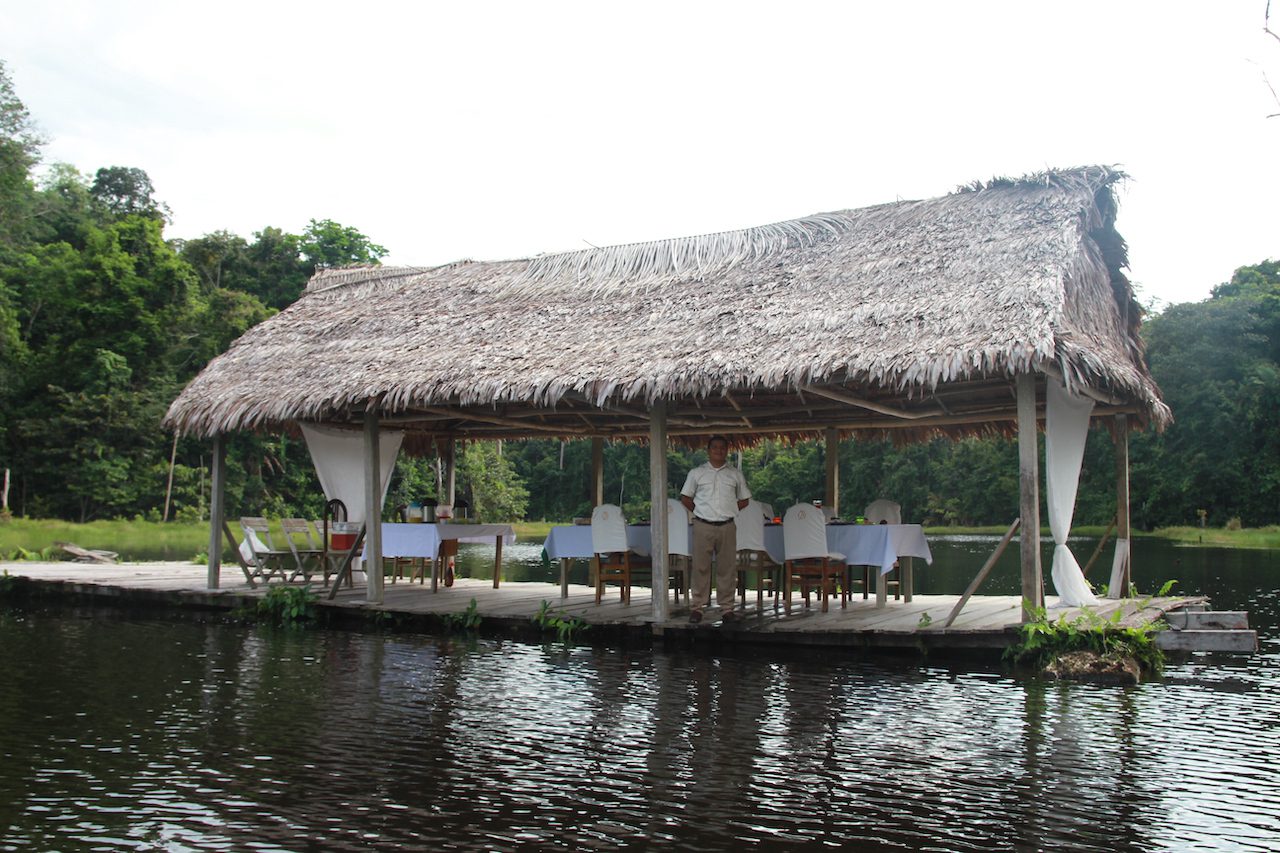
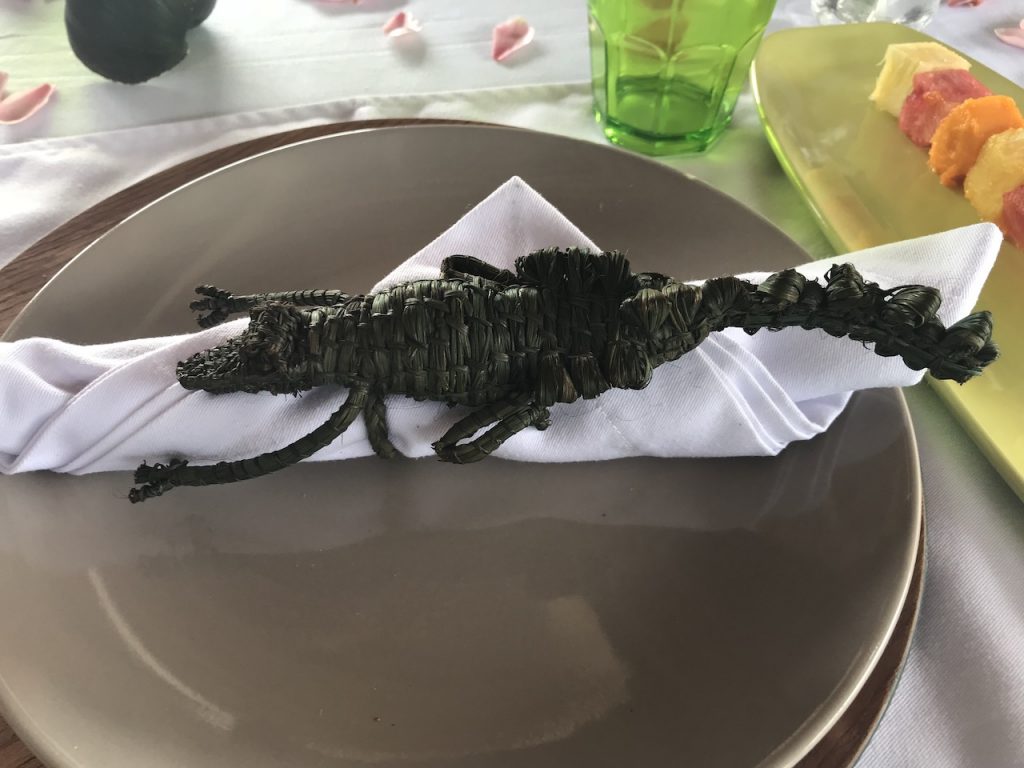
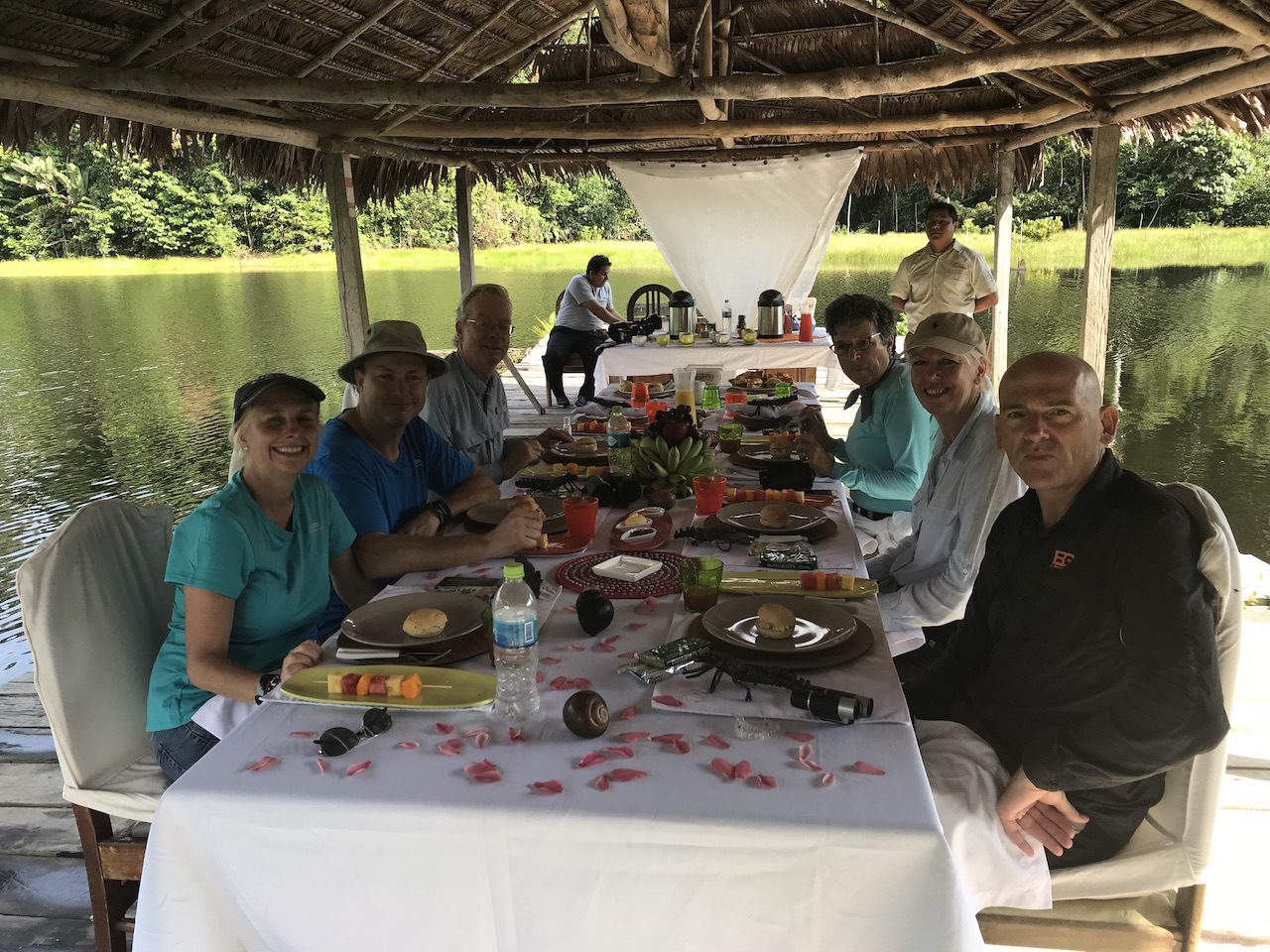

We then spent an hour or so fishing in the tranquil waters.
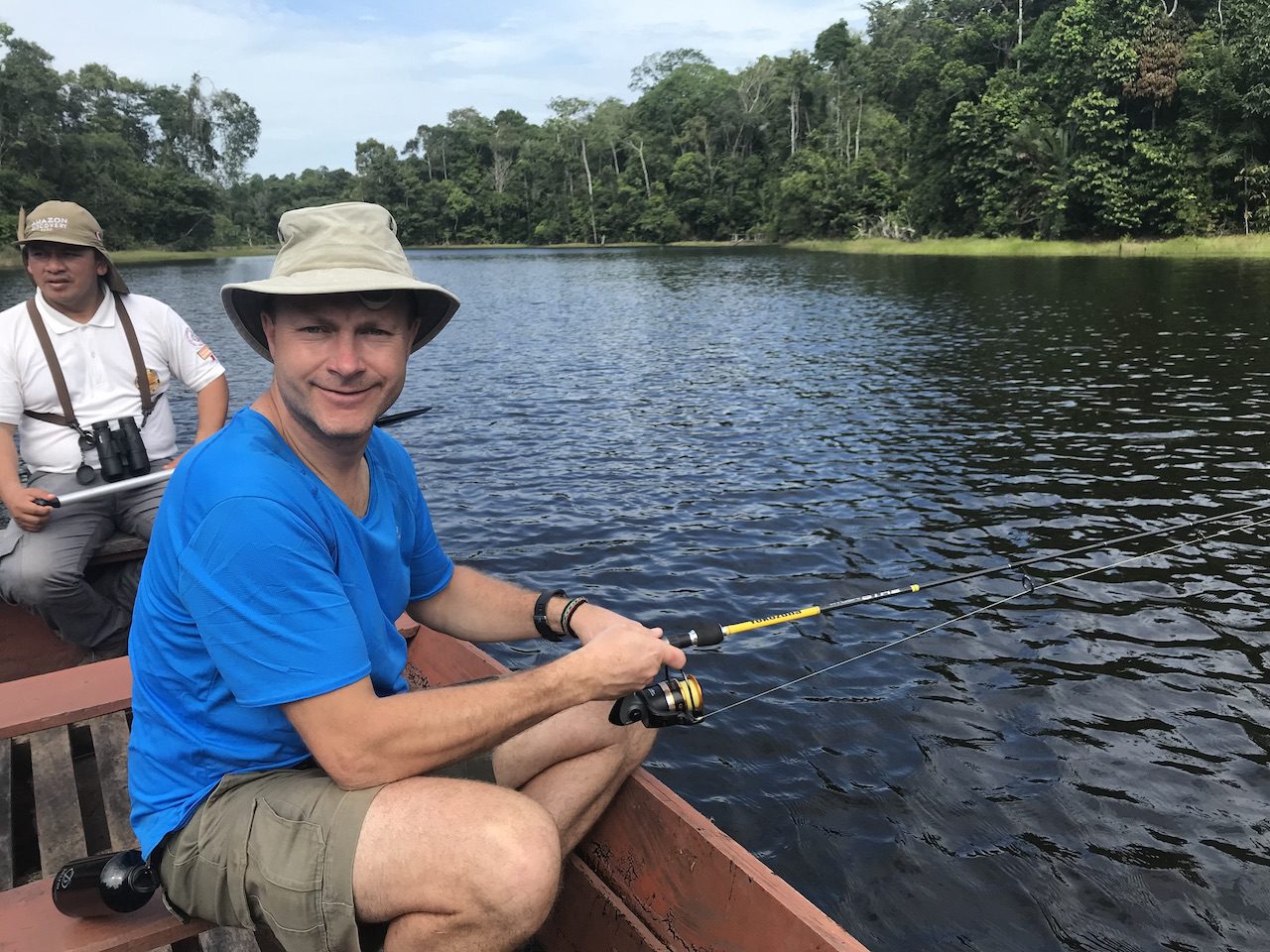
Next up was the SHAMAN! Her name was Carola – her Grandfather recognised her ability and she was 26 years old and has already been practising for 12 years!
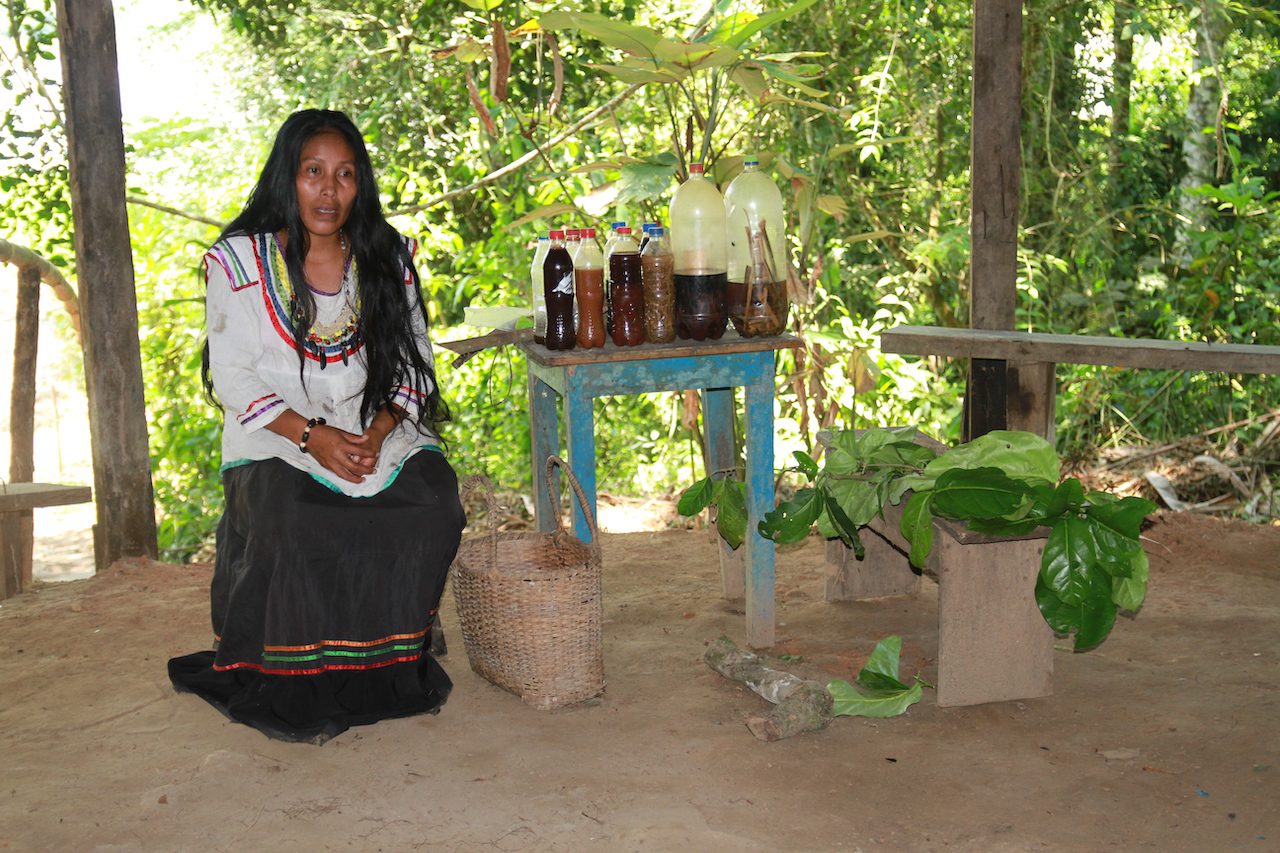
She performed a protection ceremony and rubbed smelly stuff on Paul and Tony’s heads to make their hair grow! 🙂
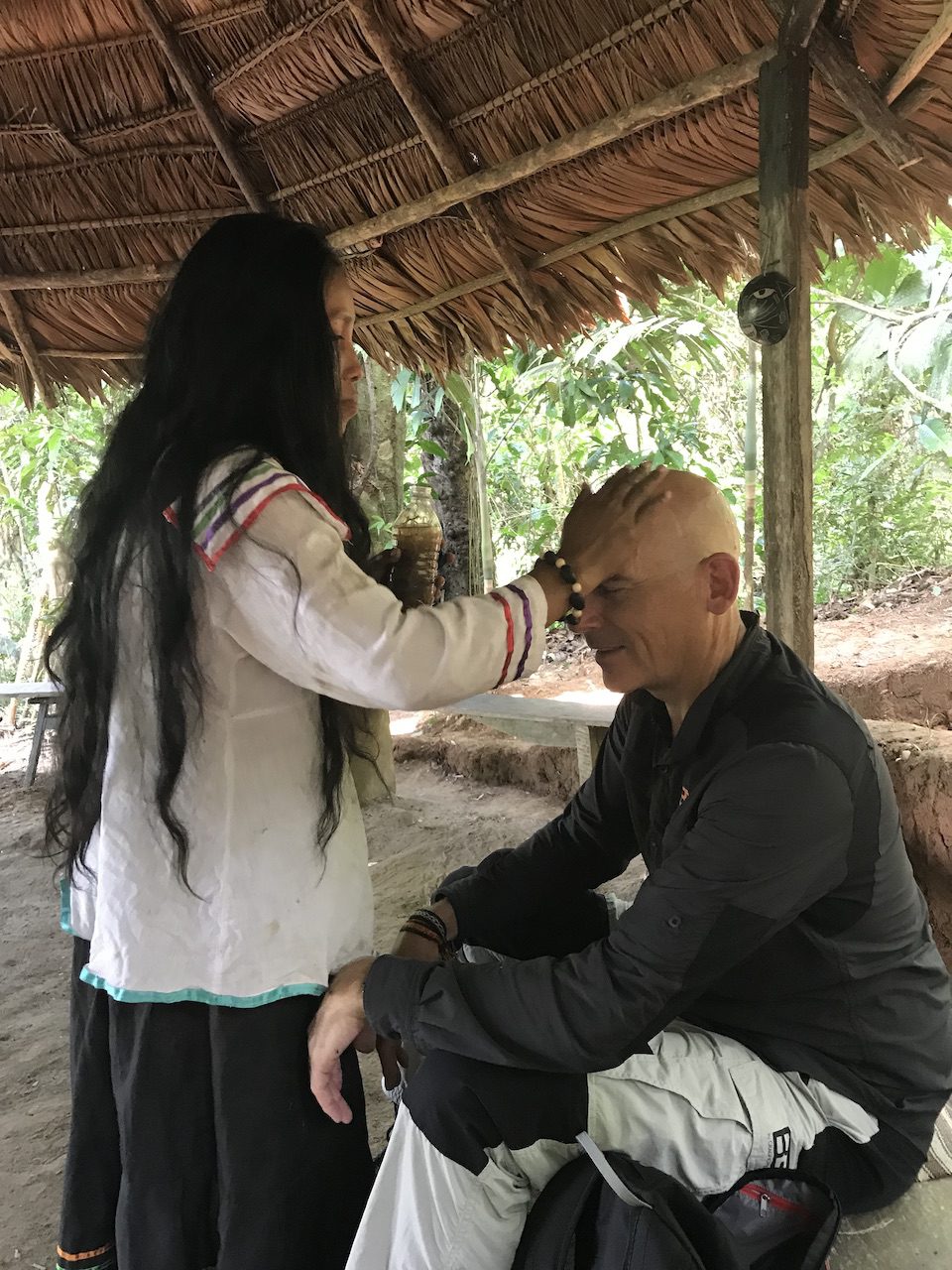
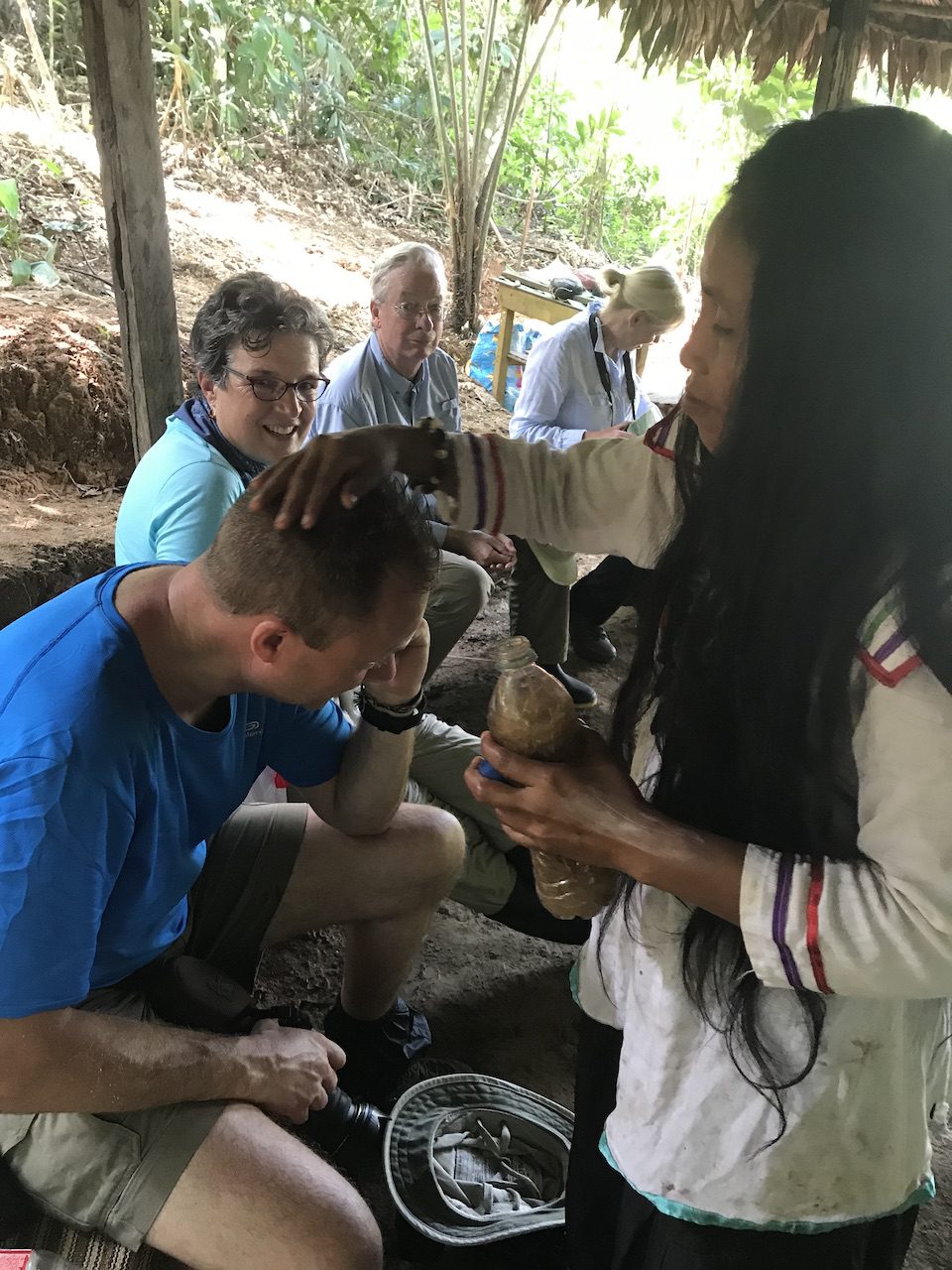
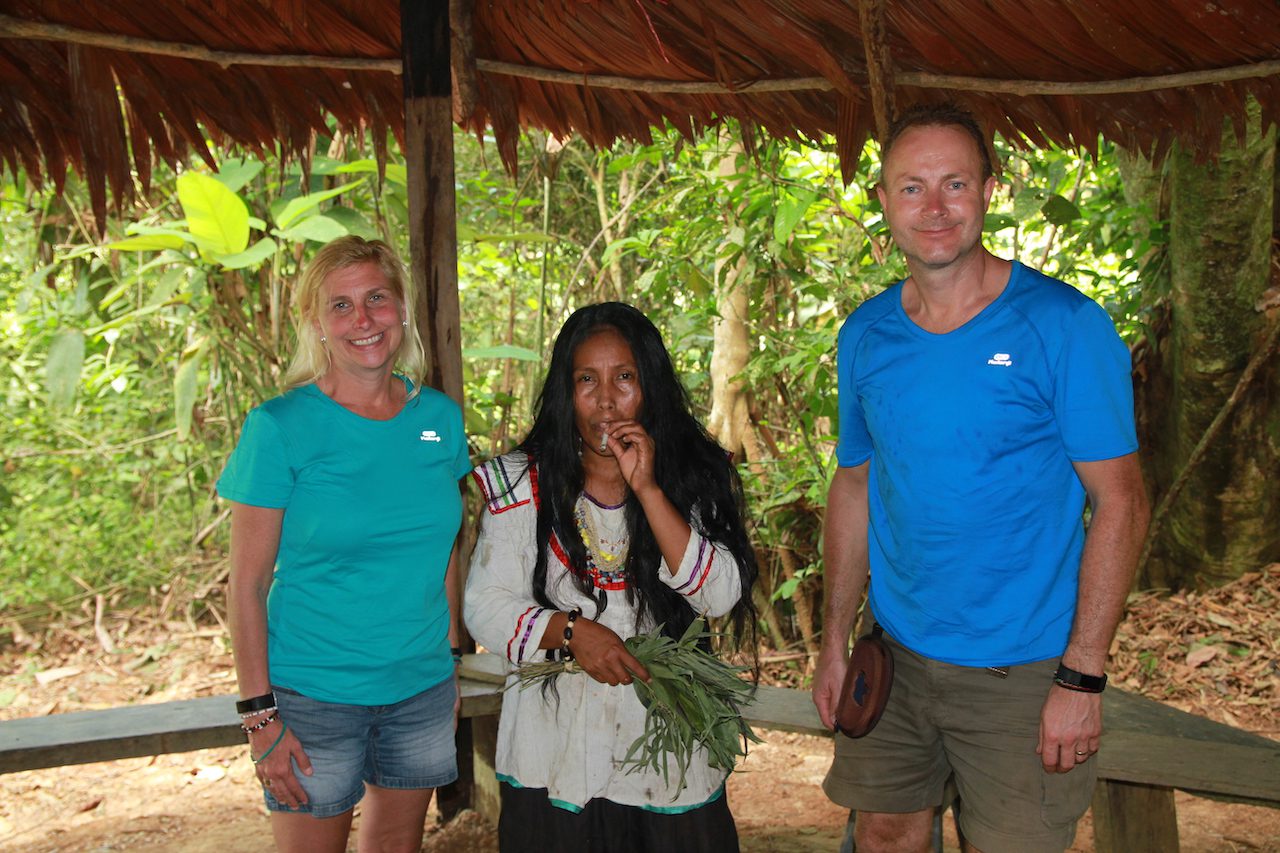
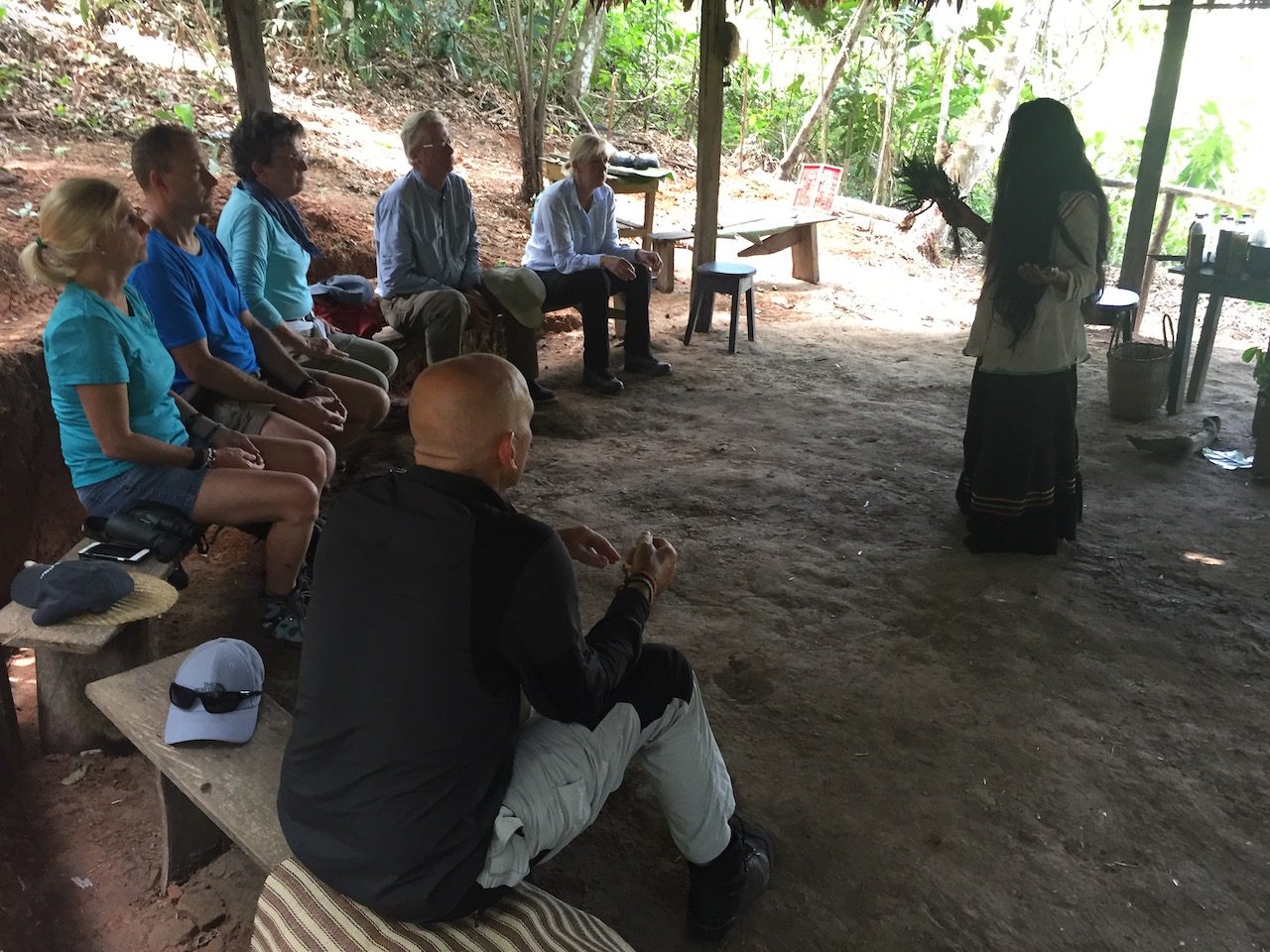
She frankly looked a bit high from the ganja she smoked during the ceremony!! Yikes.
Back on board we were pulled straight into a cooking course: Ceviche – delicious!
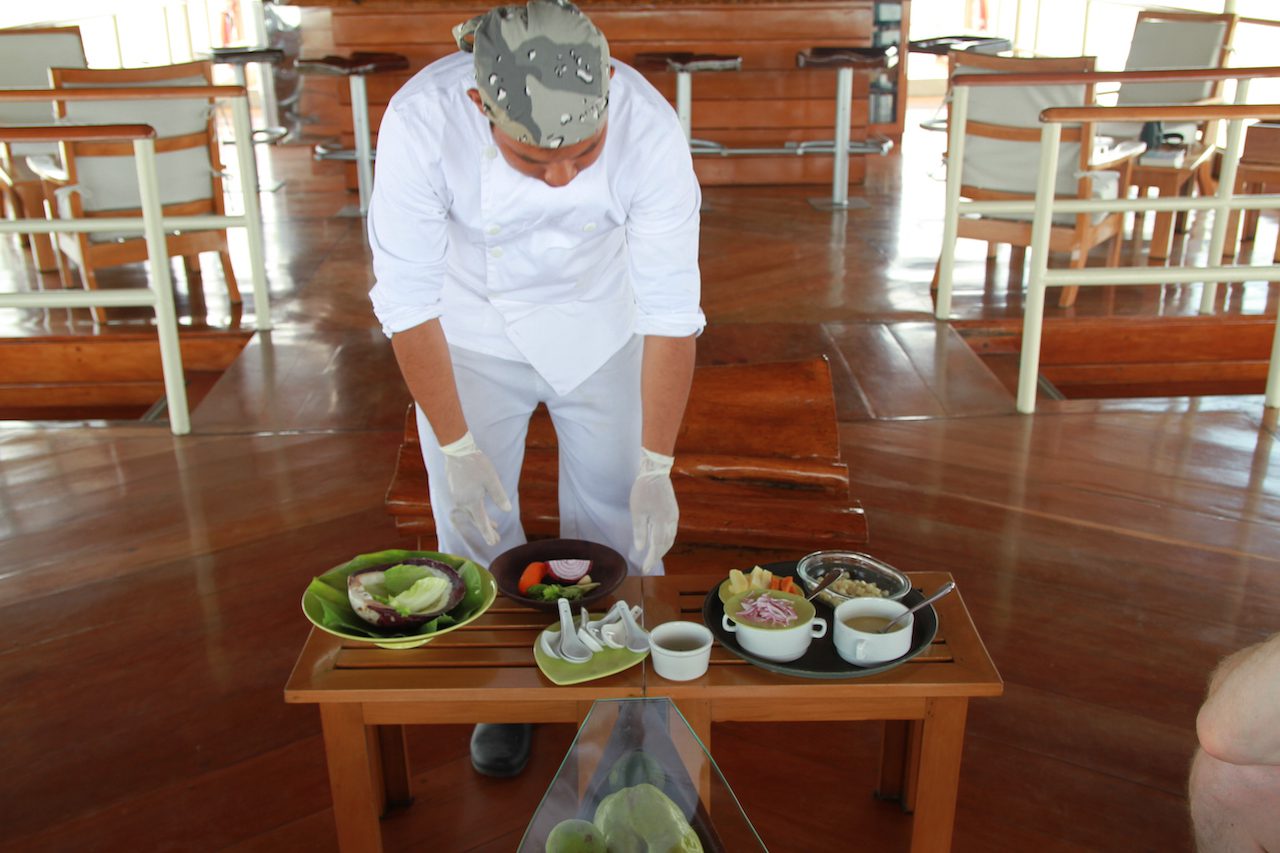
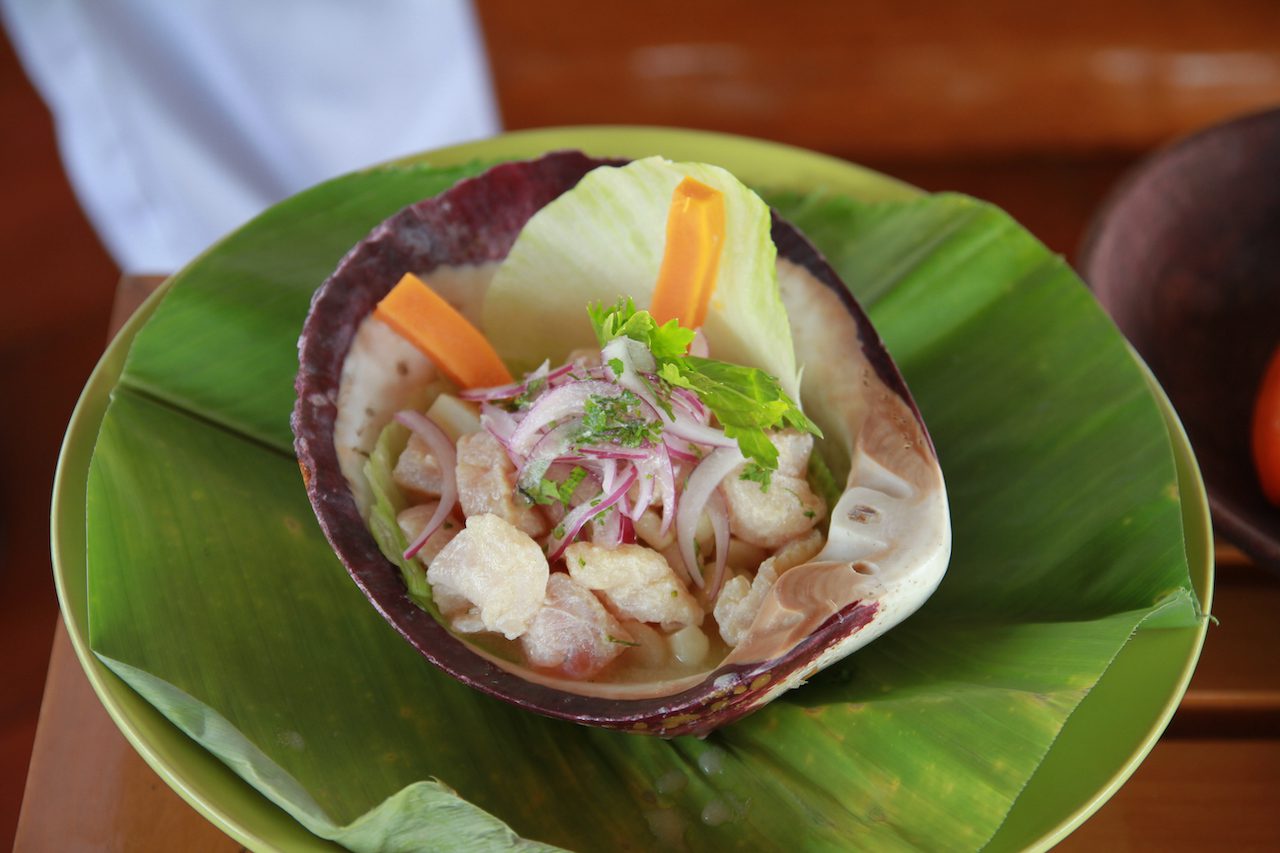
ANOTHER AMAZING lunch!
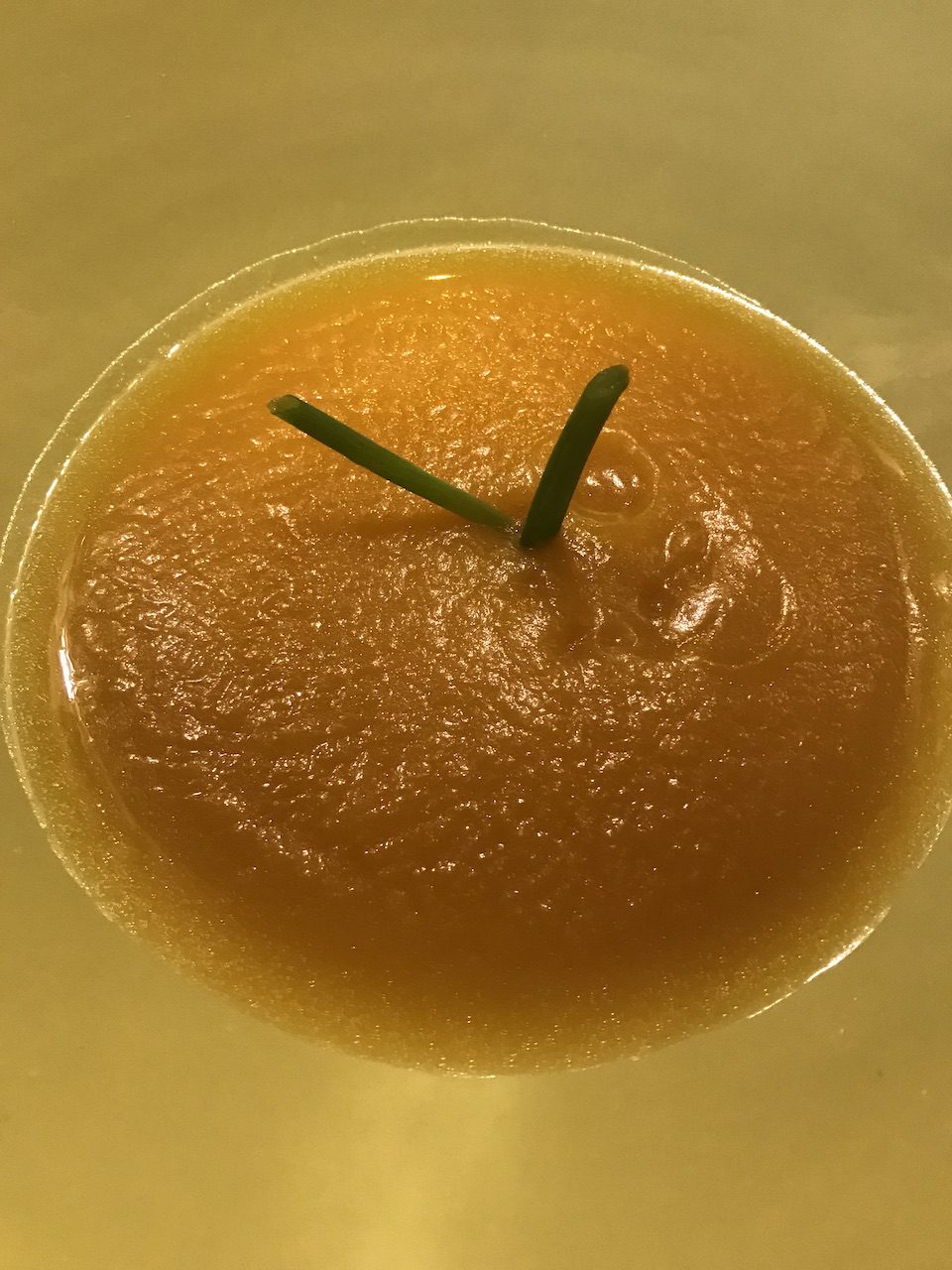
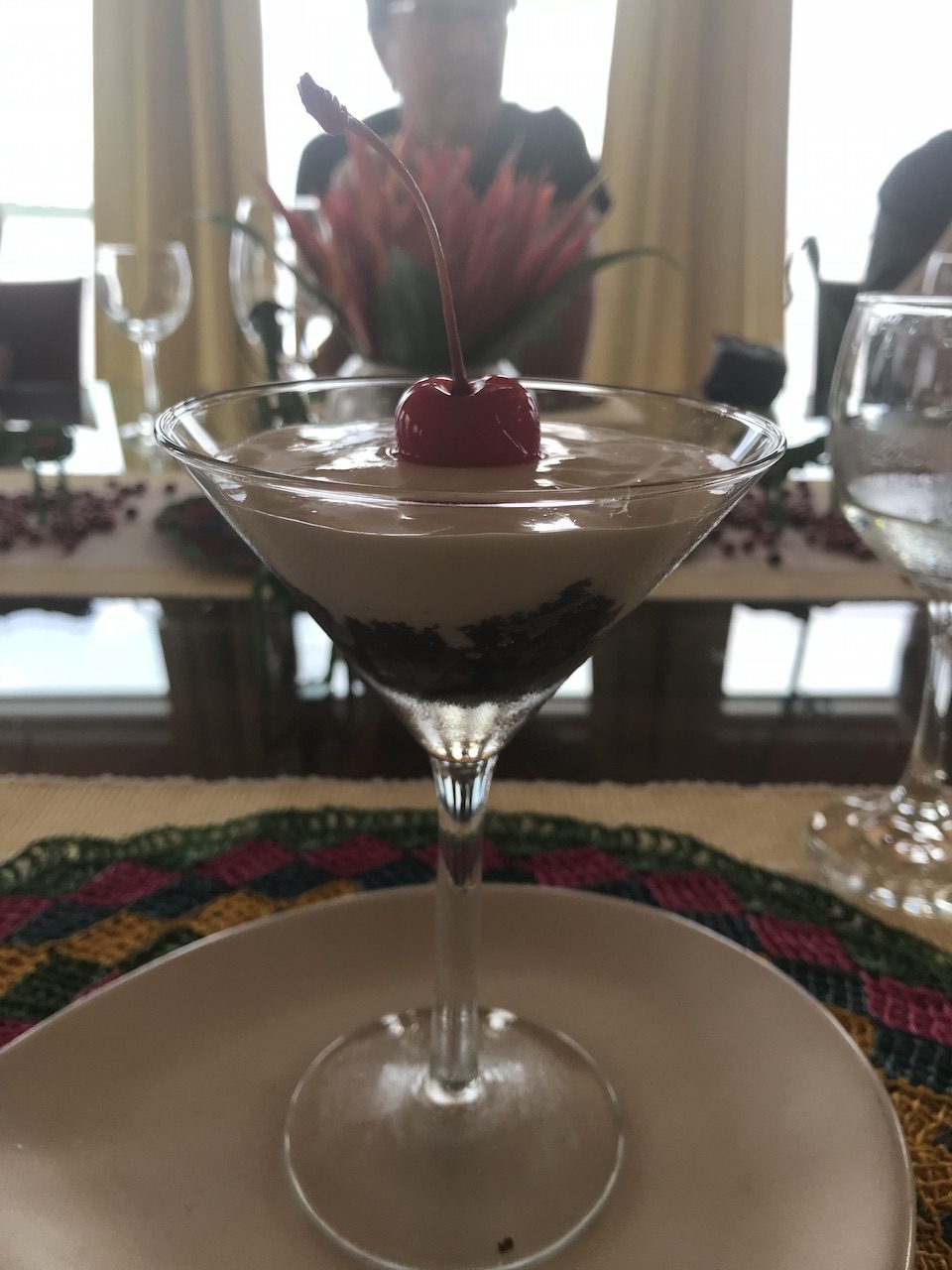
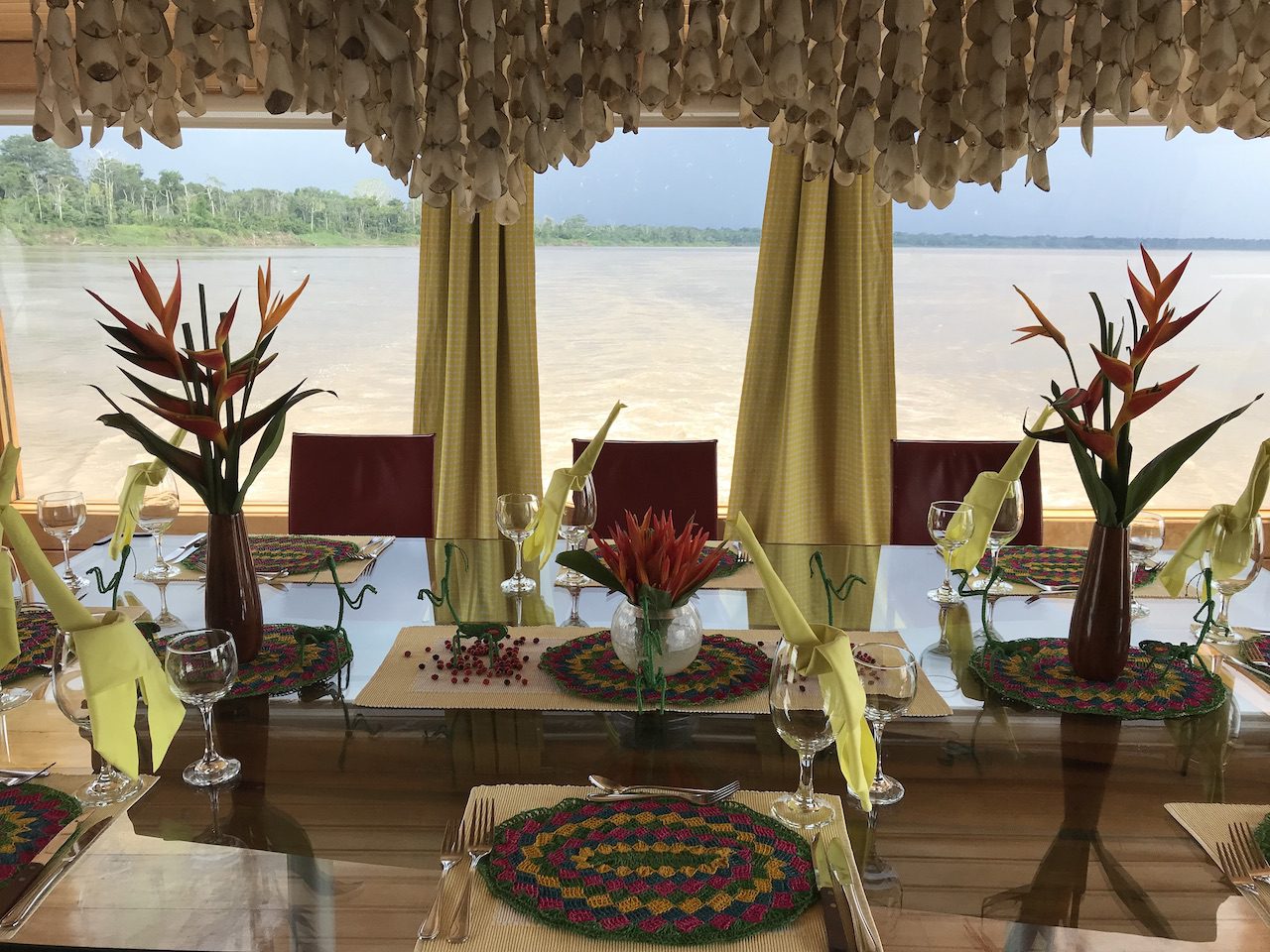
Our bedding always done immaculately…
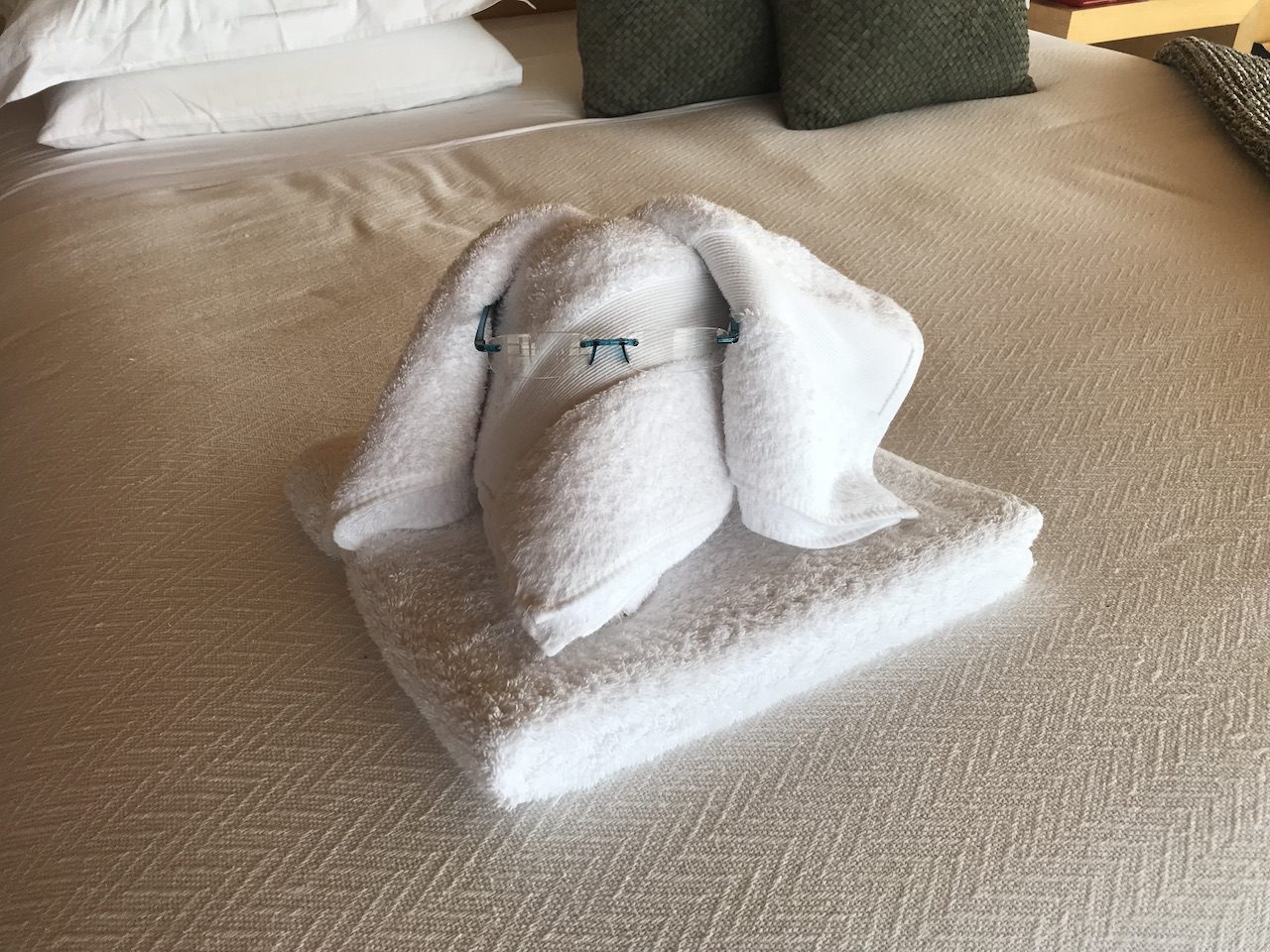
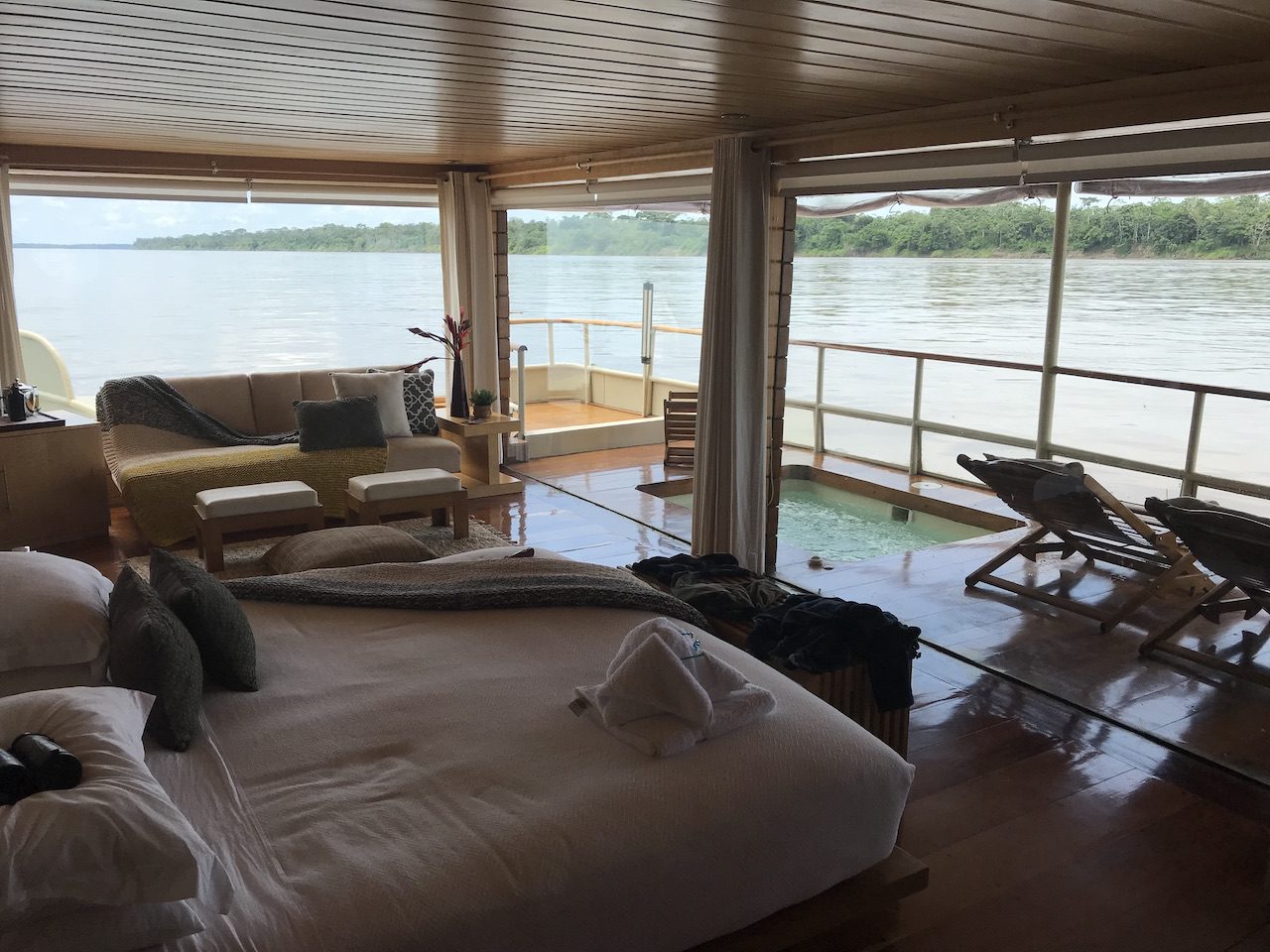
After lunch was Origami lessons but we decided to nap instead as we had bad tummies. Up at 4pm for next excursion after a swift Pisco Sour to settle stomachs. Headed off on the skiff for more wildlife spotting…we were fortunate enough to see not one, not two but THREE two toed sloths! You can clearly see how very long their claws are!
The anteater is their closest relative. Sloths are slow-moving, nocturnal creatures that spend almost their entire life upside down in the trees. They eat, sleep, mate, and give birth from this position hanging high among the branches. Sloths are the only mammals whose hair grows in the opposite direction from the hair of other mammals. To accommodate their upside-down lifestyle, the hair parts in the middle of the belly and grows upward toward the back. The hair on the face points upward, too. This allows water to run off during rainstorms! They sleep 15 hours a day to conserve energy. Organs such as the heart, liver, and spleen are placed differently in sloths than in other mammals to accommodate their upside-down lifestyle. Sloths have a powerful grip: their long claws curve around tree branches like a safety harness. Even after a sloth dies, it sometimes remains hanging in the trees with its death grip. It has the lowest and most variable body temperature of any mammal, ranging from 24 to 33 degrees Celsius. If there is a long period of cool, rainy weather, a nursing female can get too cold. This causes the bacteria in her stomach to stop working, so the mother can no longer digest her food. The young continues to nurse as its mother starves to death. This chilling phenomenon is called cold-weather orphan syndrome, as sometimes the youngster falls to the ground and needs to be rescued by humans. The reason they move so slowly has a lot to do with what they eat: a variety of leaves, stems, buds, and some fruit. This kind of diet requires a special digestive system. Sloths have a large, four-chambered stomach, like a cow. Even their innards move slowly, and some food items can take an entire month to digest!
These ponderous mammals spend most of their time alone. But when a female is ready to breed, she lets out a nighttime “scream” that alerts any interested males. If more than one male reaches her at the same time, they slowly fight each other while hanging by their rear legs! Winner takes all, and several months later, the female gives birth (while upside down) to a single offspring.
The youngster must grab onto its mother’s hair at birth and find its way to her nipples to nurse. The mother’s body position looks like a comfortable hammock of sorts as baby rests on her chest. The baby begins sampling solid foods at about 10 days but still nurses for about a month. After that, the youngster continues to cling to its mother’s belly but eats whatever she eats. It first hangs upside down on its own at 20 to 25 days.
The sloth youngster stays with its mother for six months to two years, depending on the subspecies. It then “branches off” to live on its own. The young inherits a part of the home range left vacant by the mother, as well as her taste for certain leaves. Several sloths can live in a similar home range without competing for food or space.
A sloth’s voice sounds like the hiss of a deflating balloon, but they can also squeal and grunt as needed. A low bleat signals distress—sloth ears are most tuned to low-frequency sounds. The sloth has an excellent sense of smell. Males scent mark on tree branches from a gland on the rump. we found them highly interesting creatures.
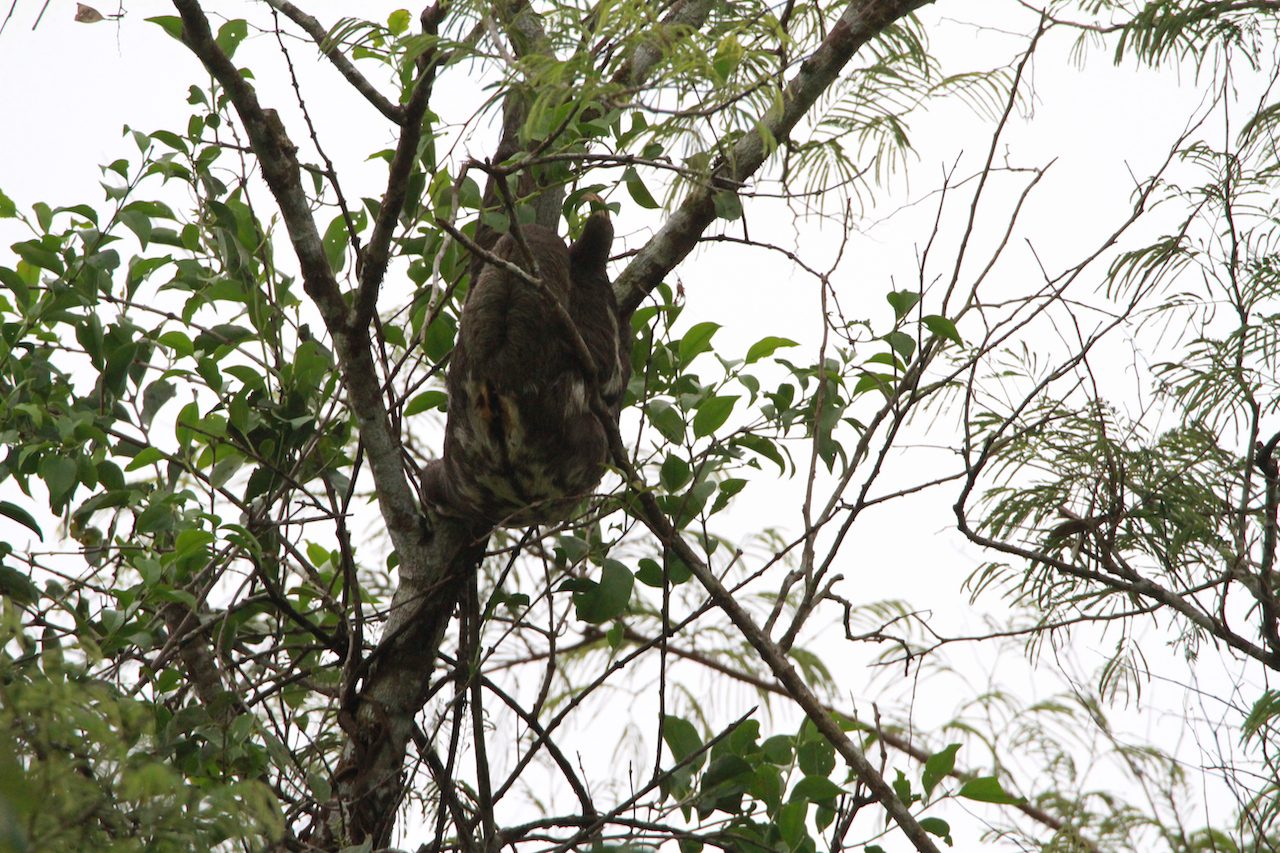
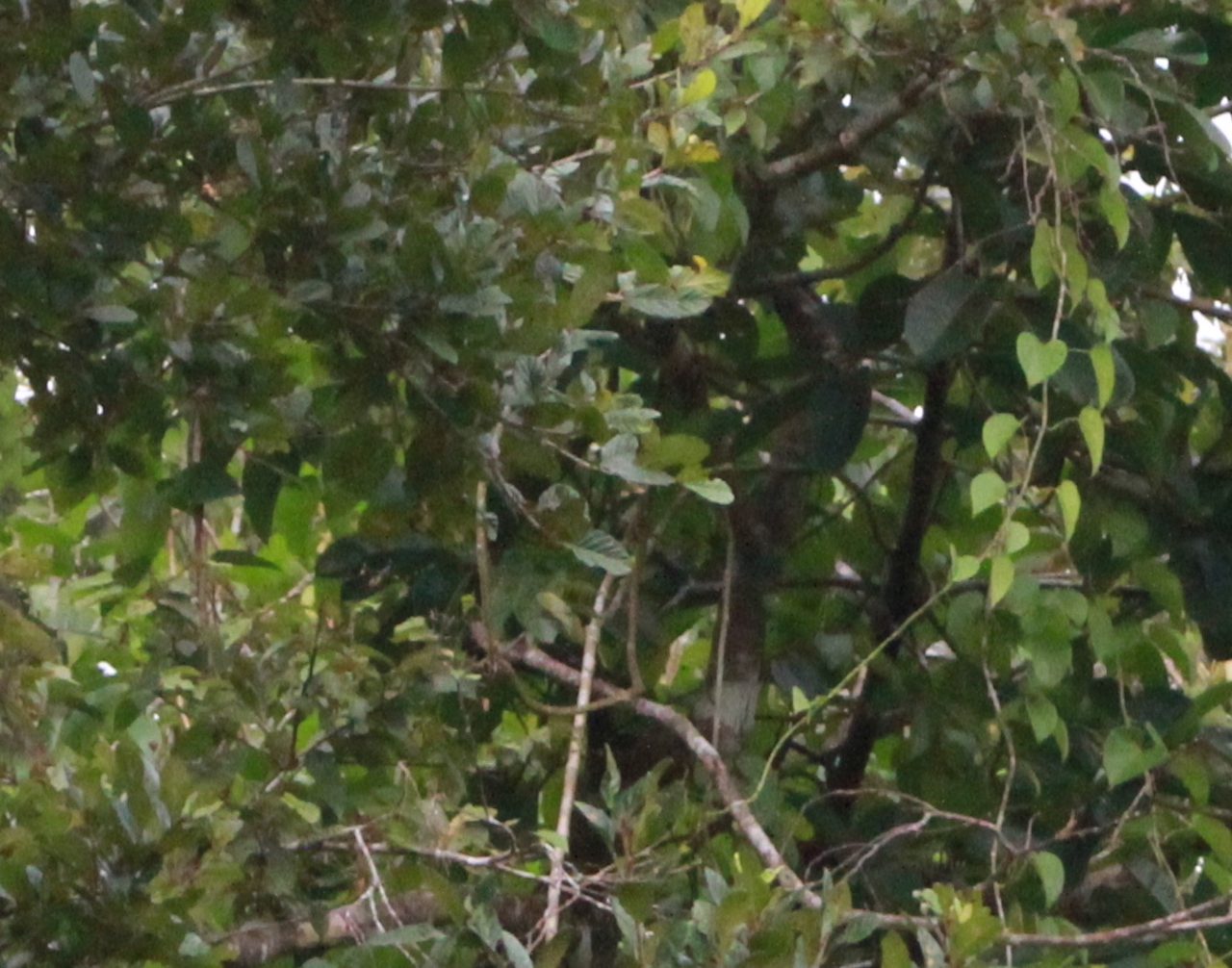
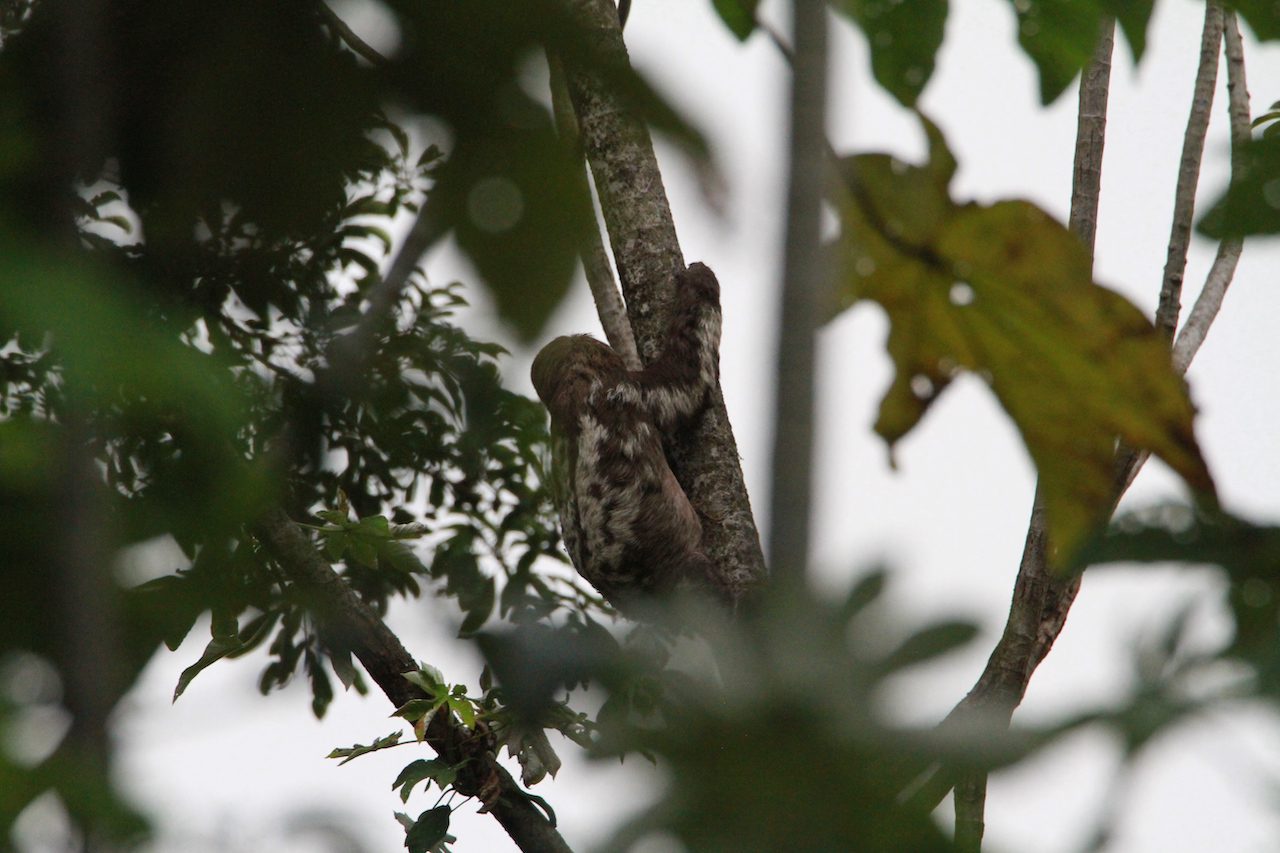
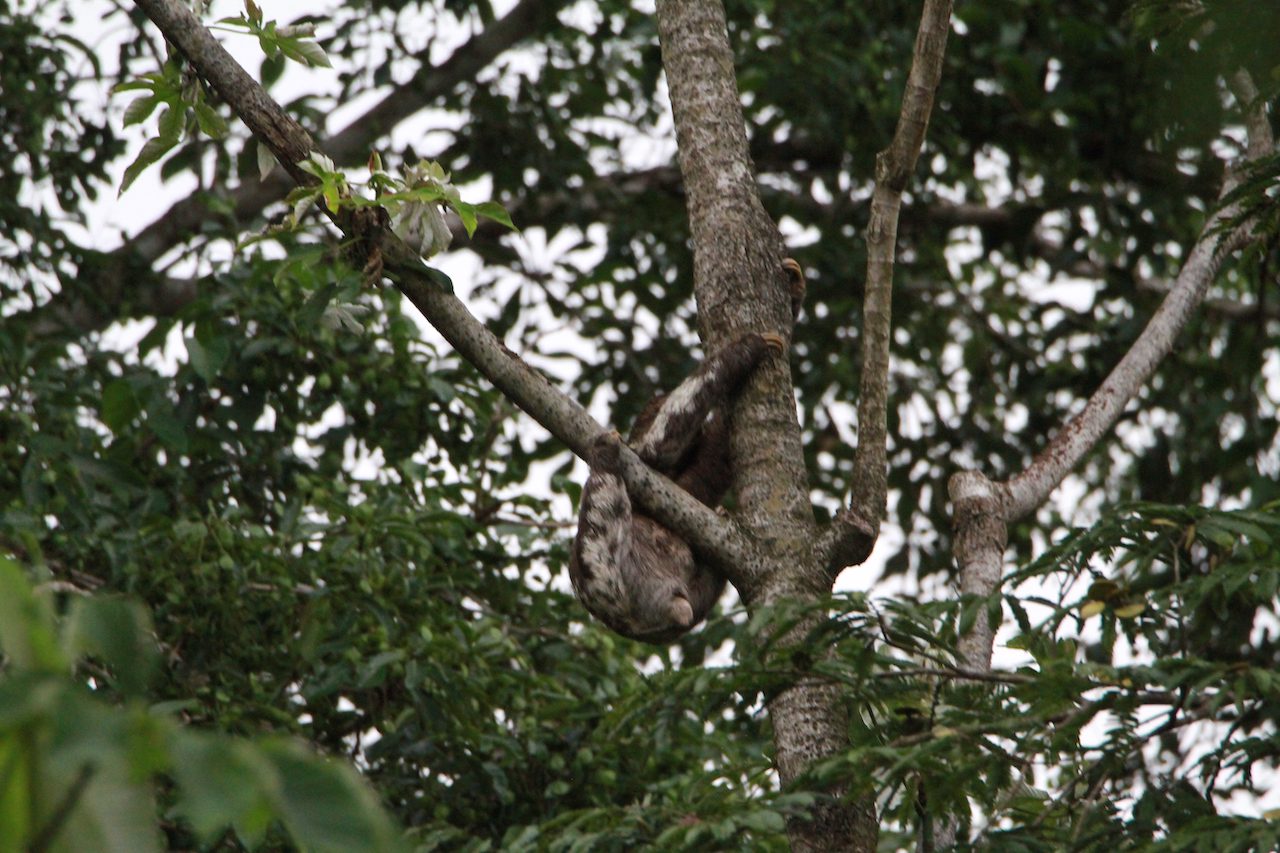
There were some interesting birds in the area as well as more monkeys.
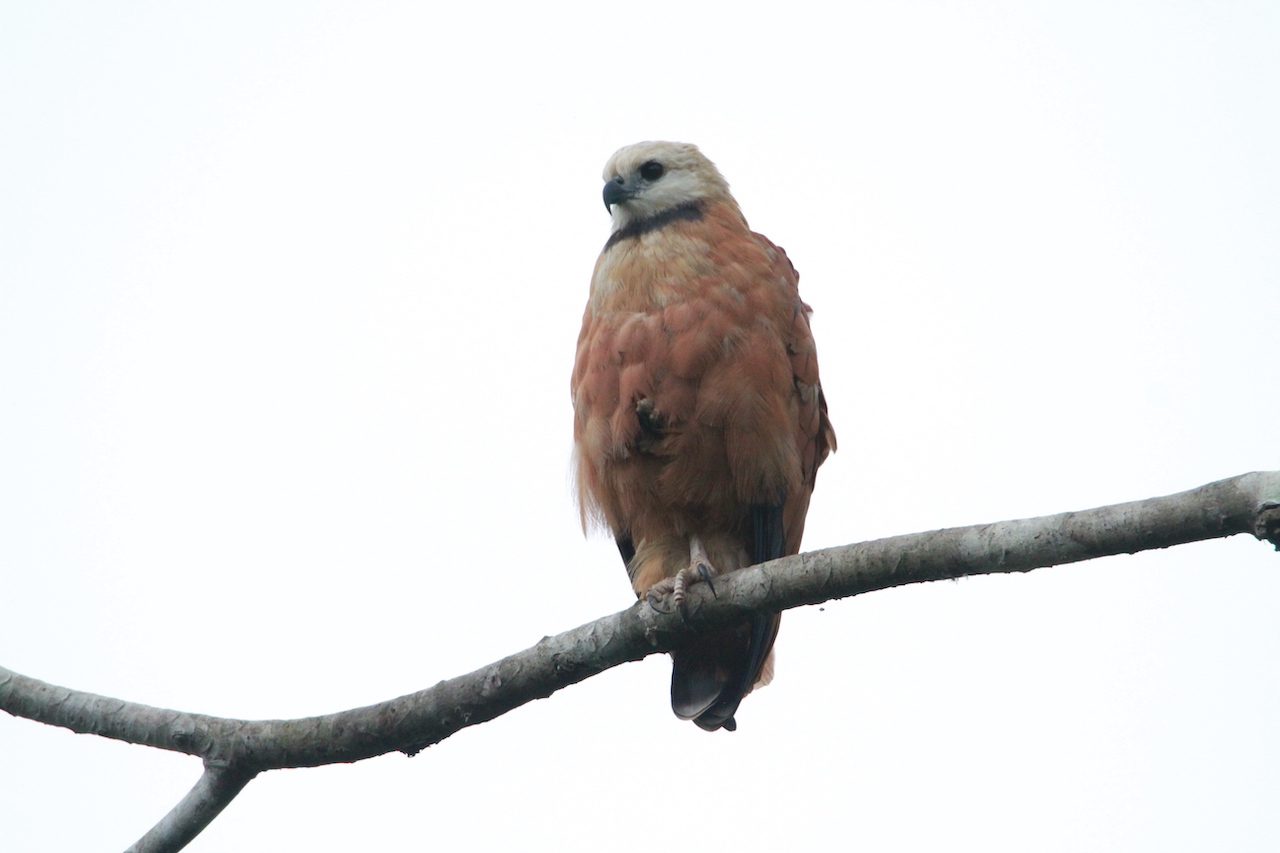
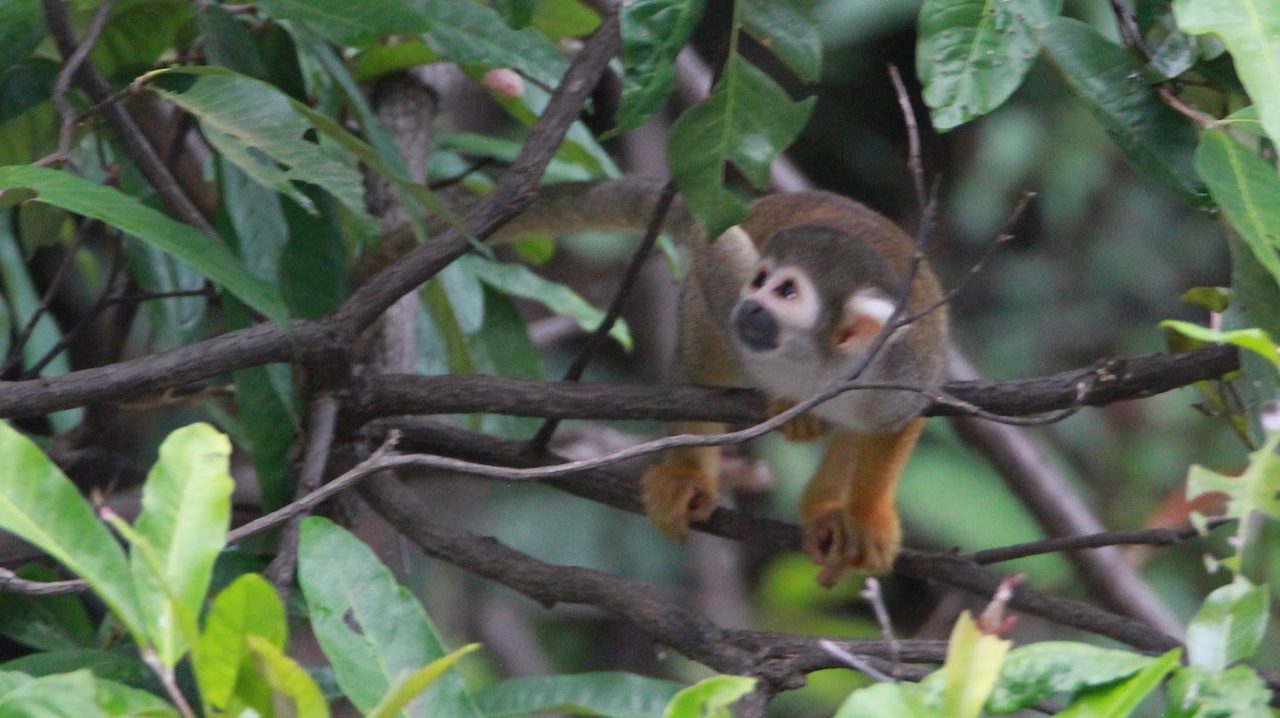
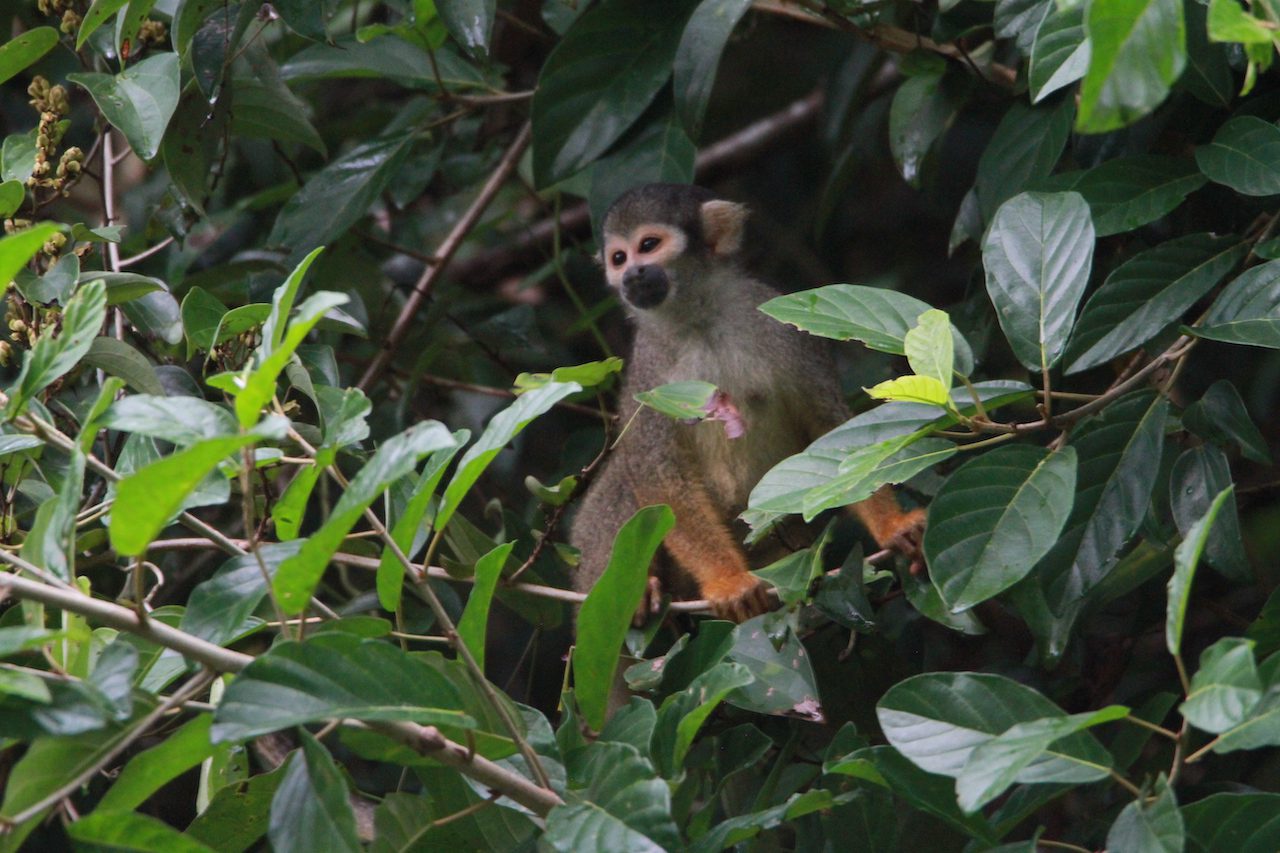
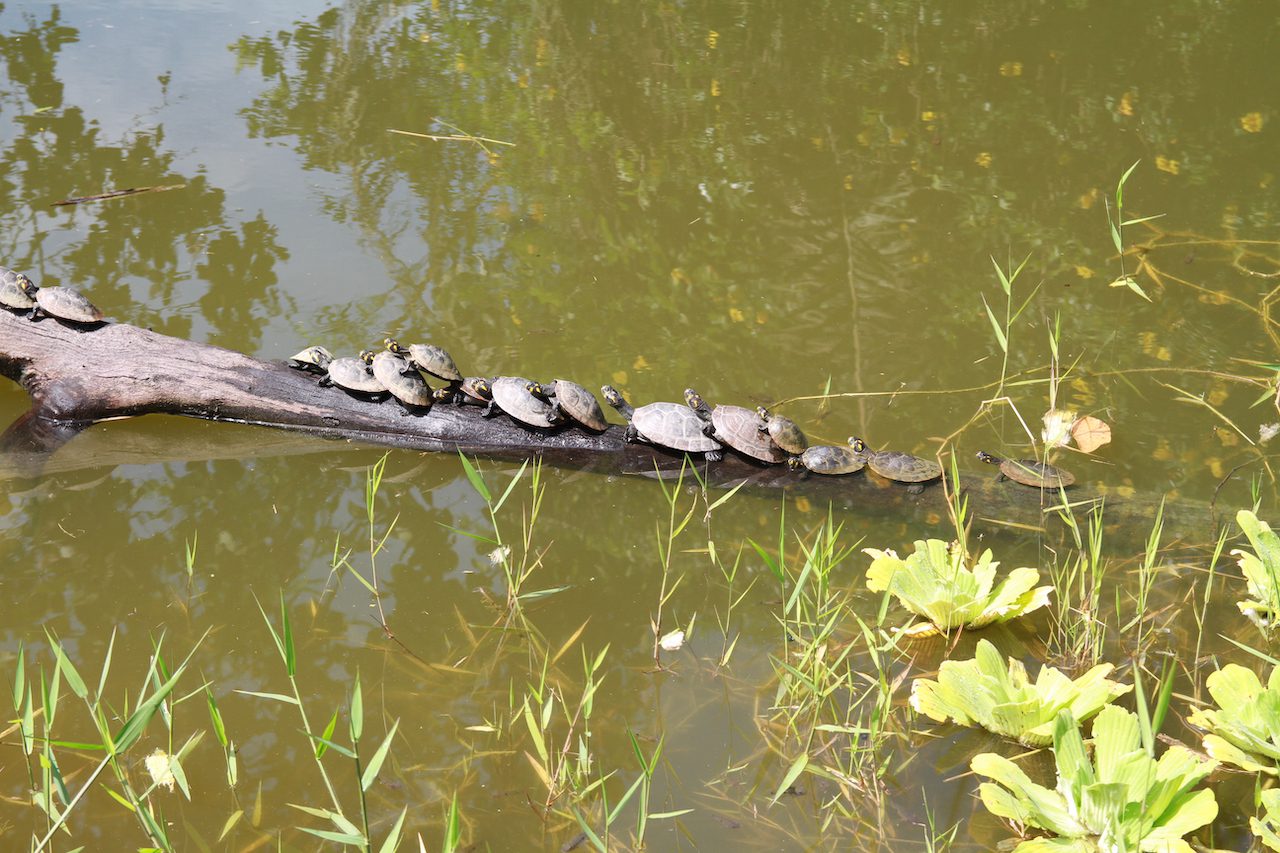
Next up was Fishing – Tony was first to be successful with a piranha.Then we all managed to catch something – phew! LOL.
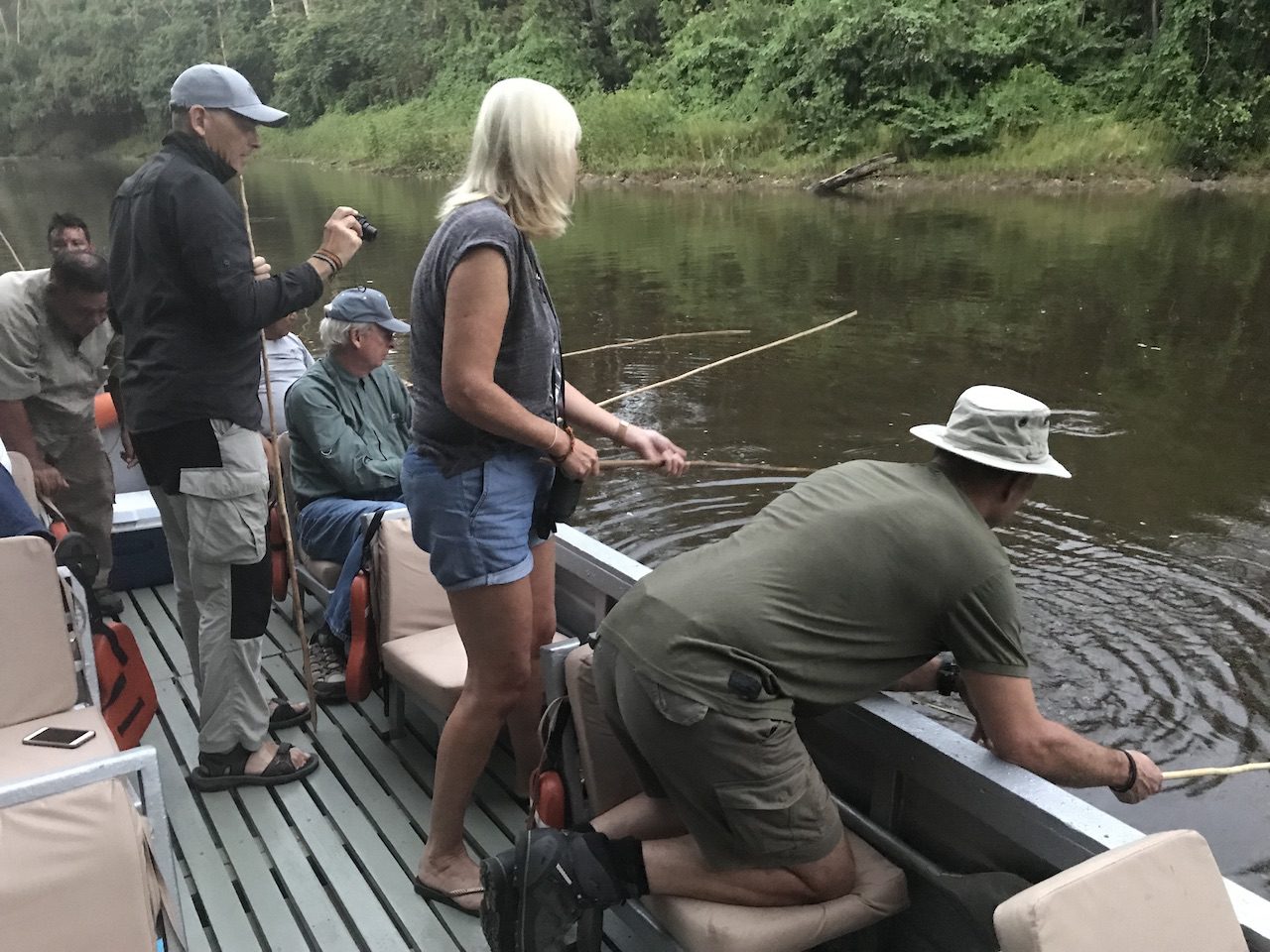


Not satisfied with mere piranha we set off to hunt … caiman! Paul dropped the poor thing in the boat which caused complete mayham as we were all trying to leap out of its way and avoid a nip! Hilarious!
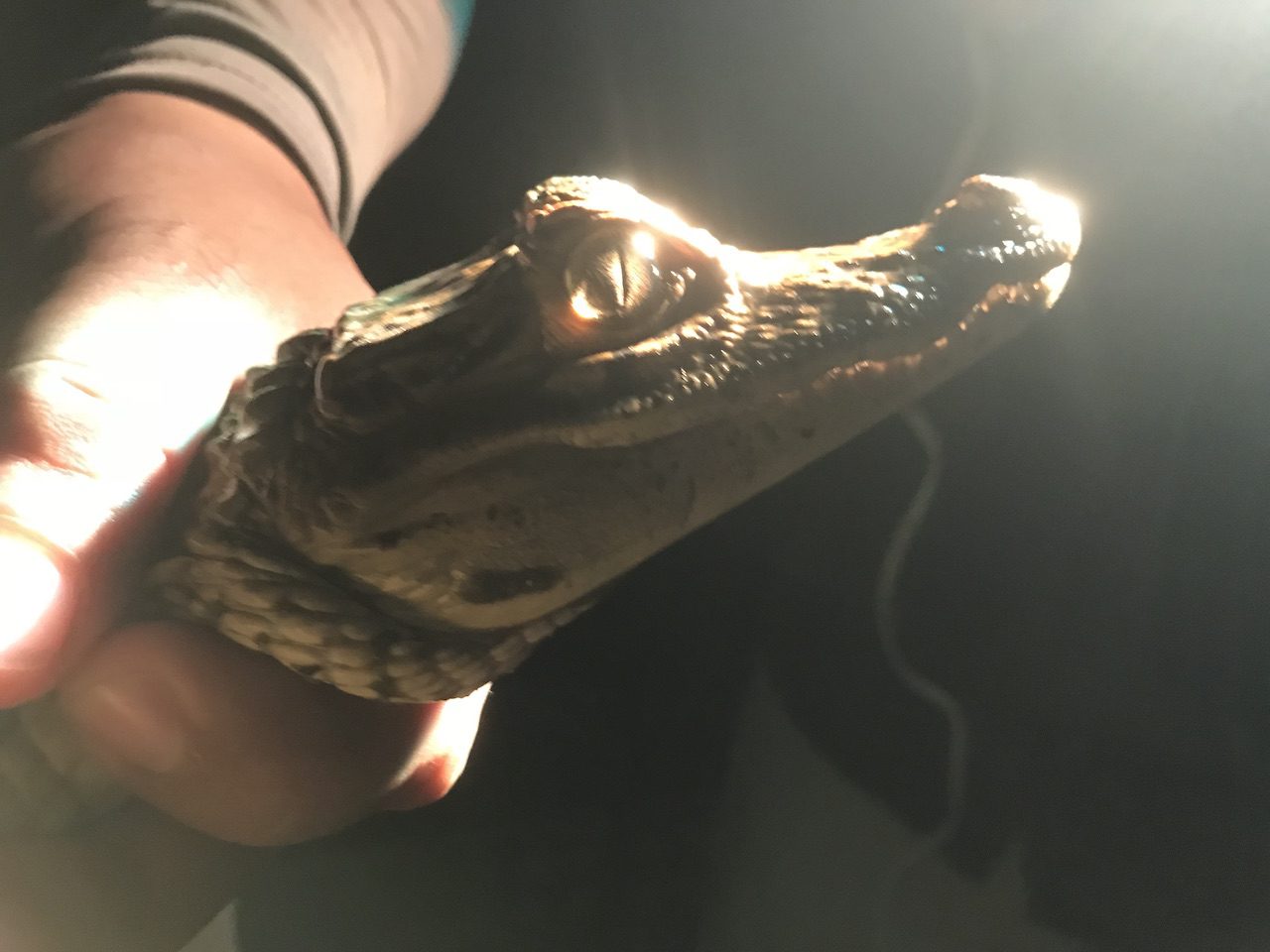
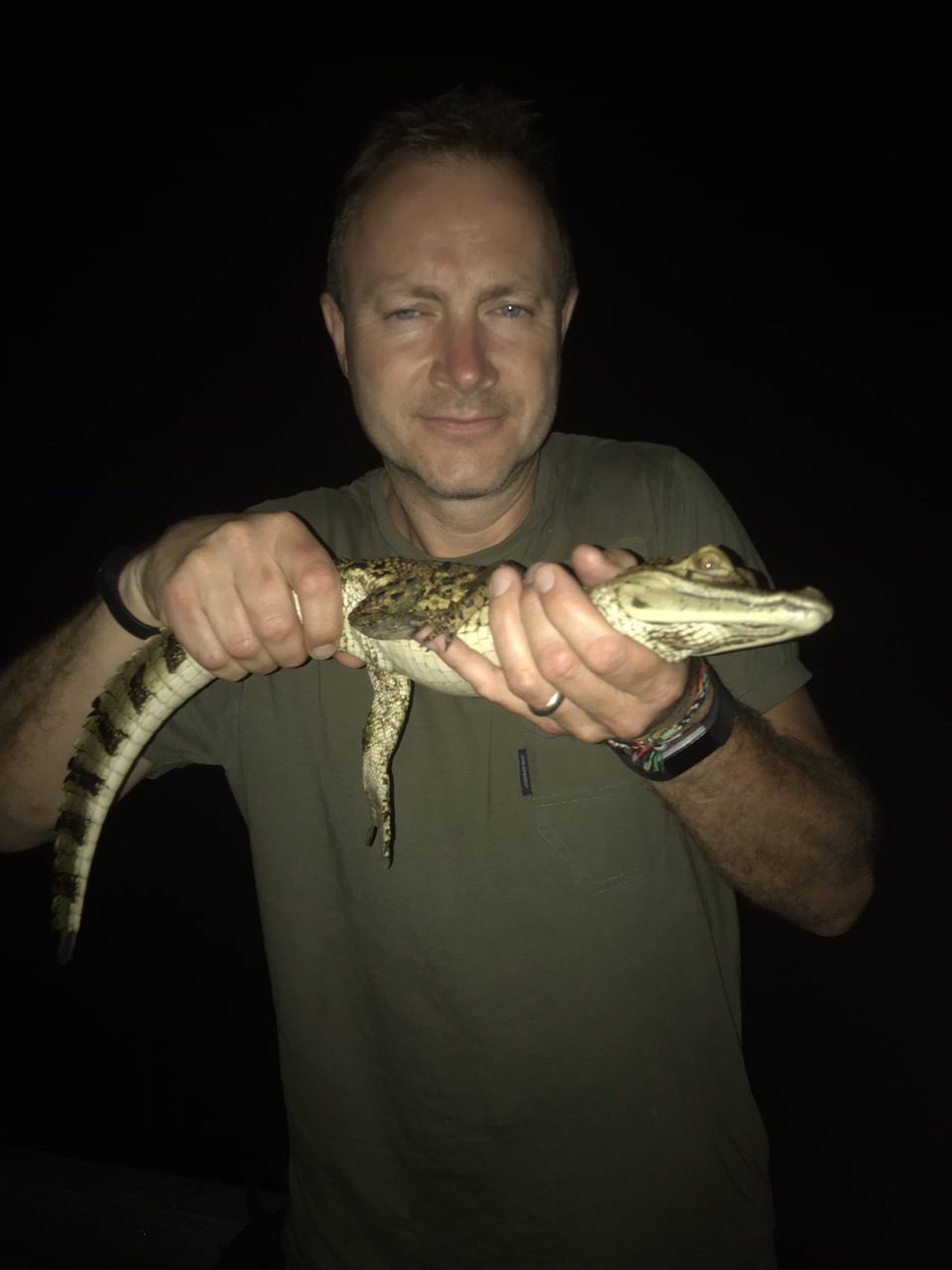
We haded back to the boat for our final dinner. The Captain and crew wished us well and then all played instruments and sang with us. Dinner was of course wonderful with a Halloween Theme given the October date! A fitting finale to a fantastic trip and a fine feast!
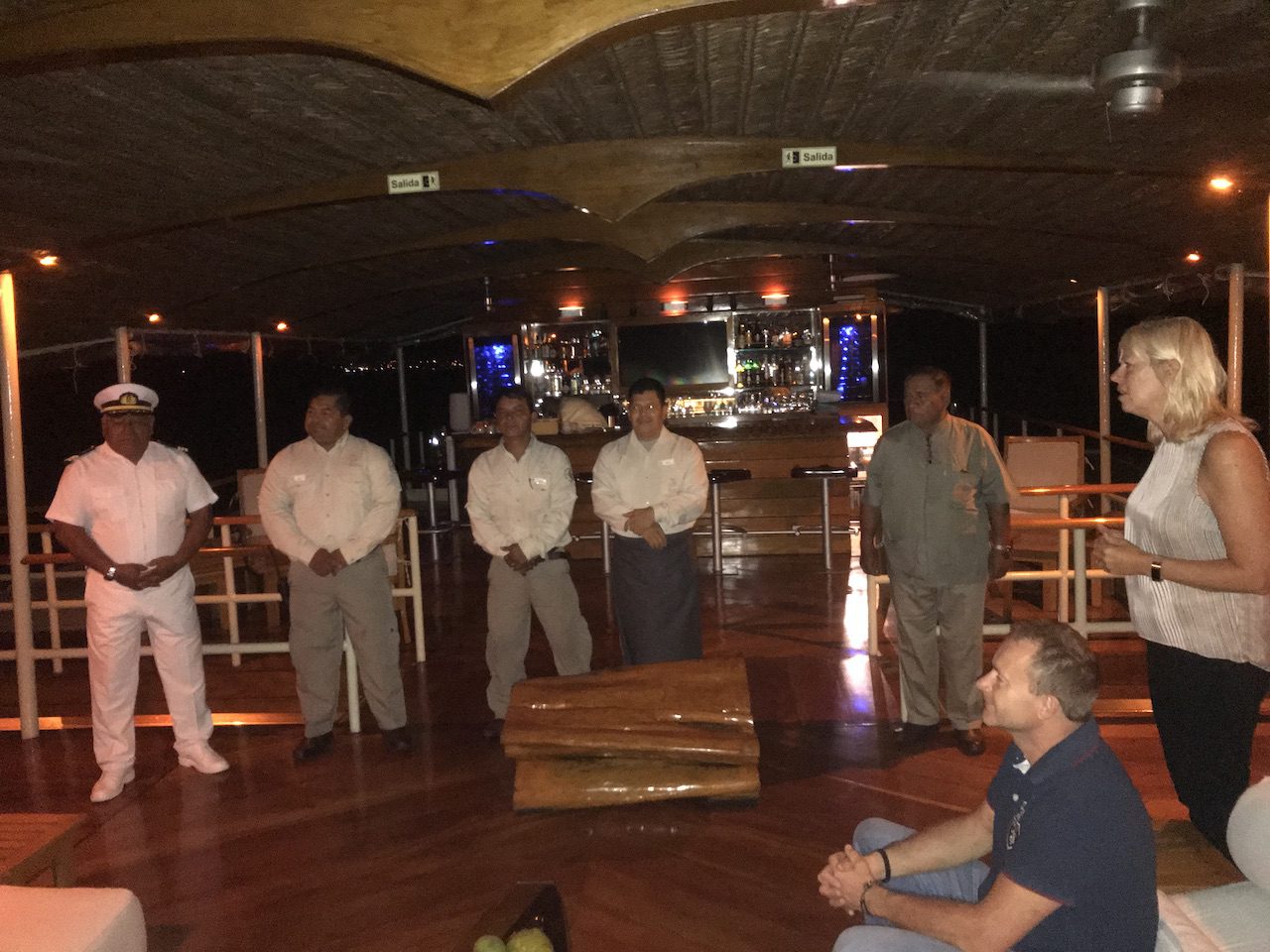
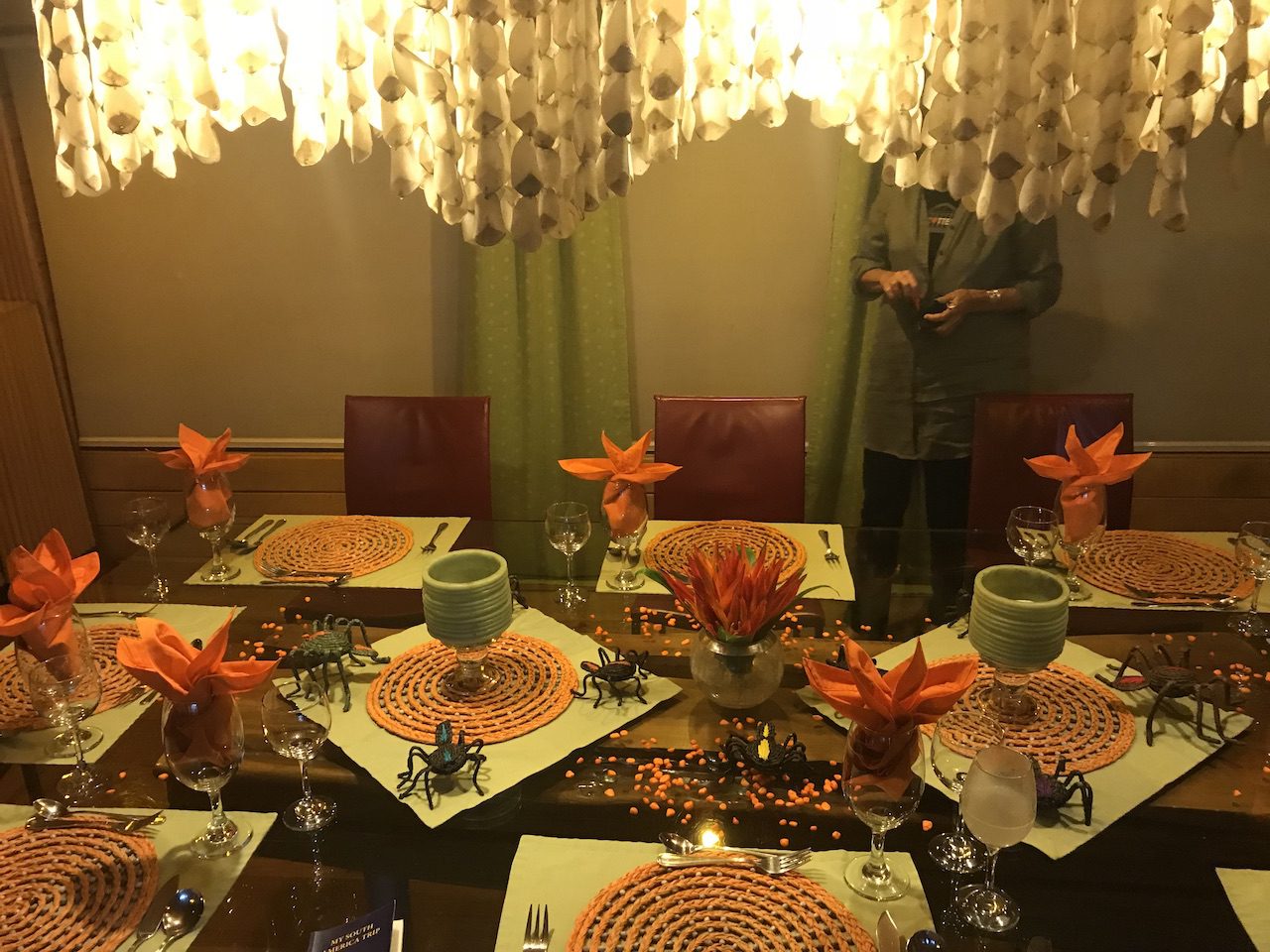
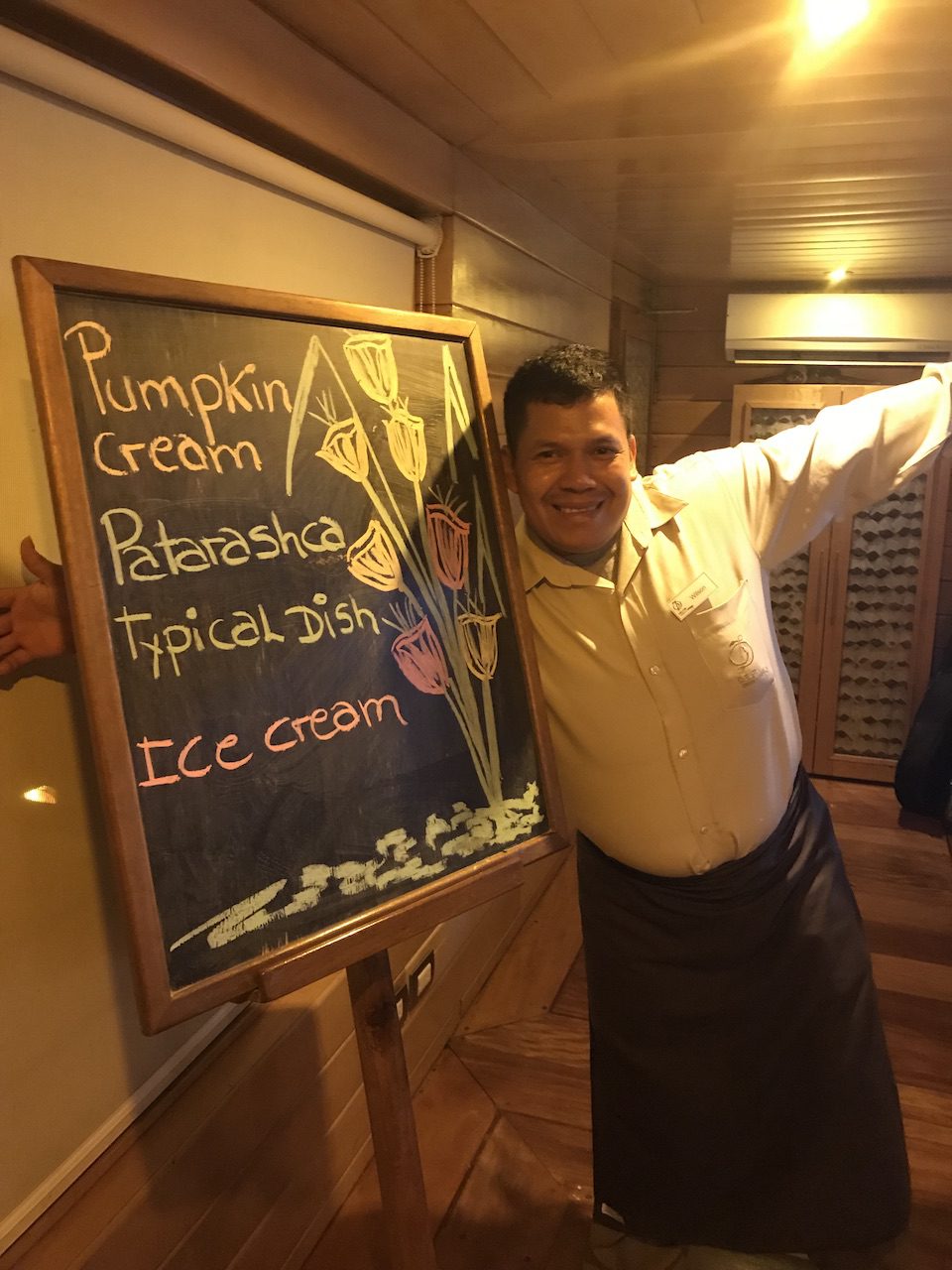
Thursday: 19 October 2017
We departed Delfin 1 after a hearty breakfast. The other couple who had not come out of their cabin once since the first night looked rather sheepish and did not say a word – very odd indeed. We visited the manatee centre on the way to the airport – a very interesting stopover with a variety of rare species.
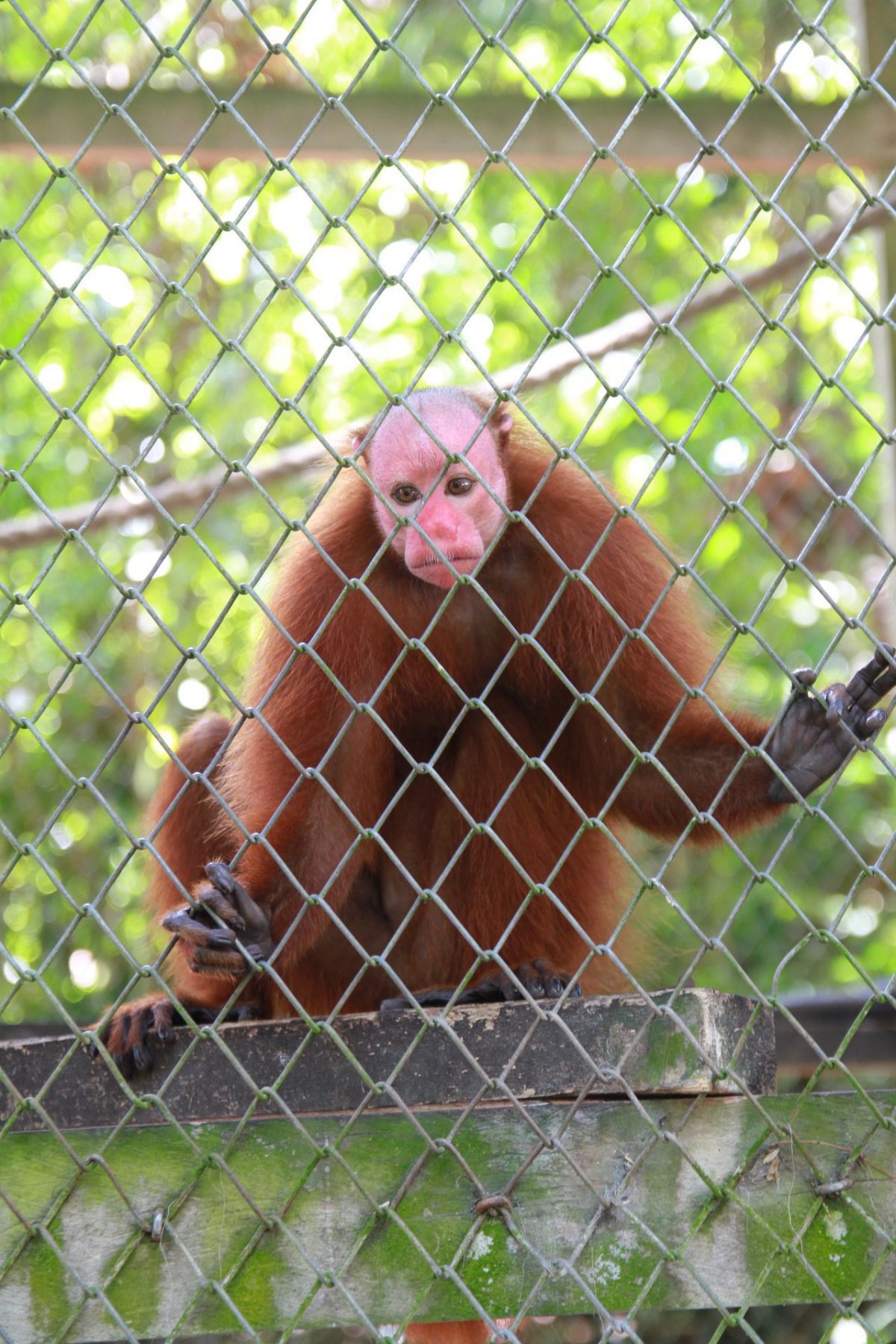
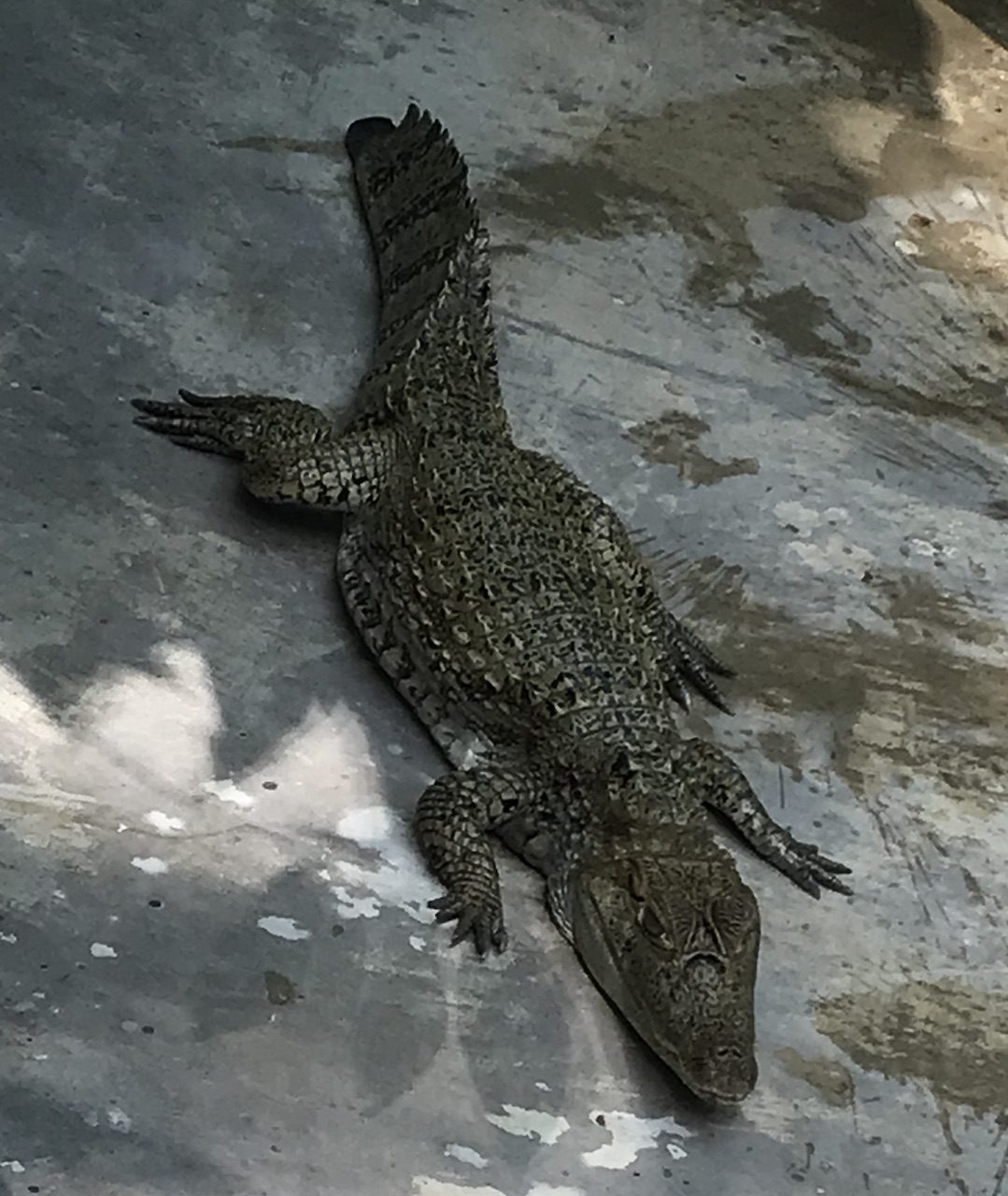
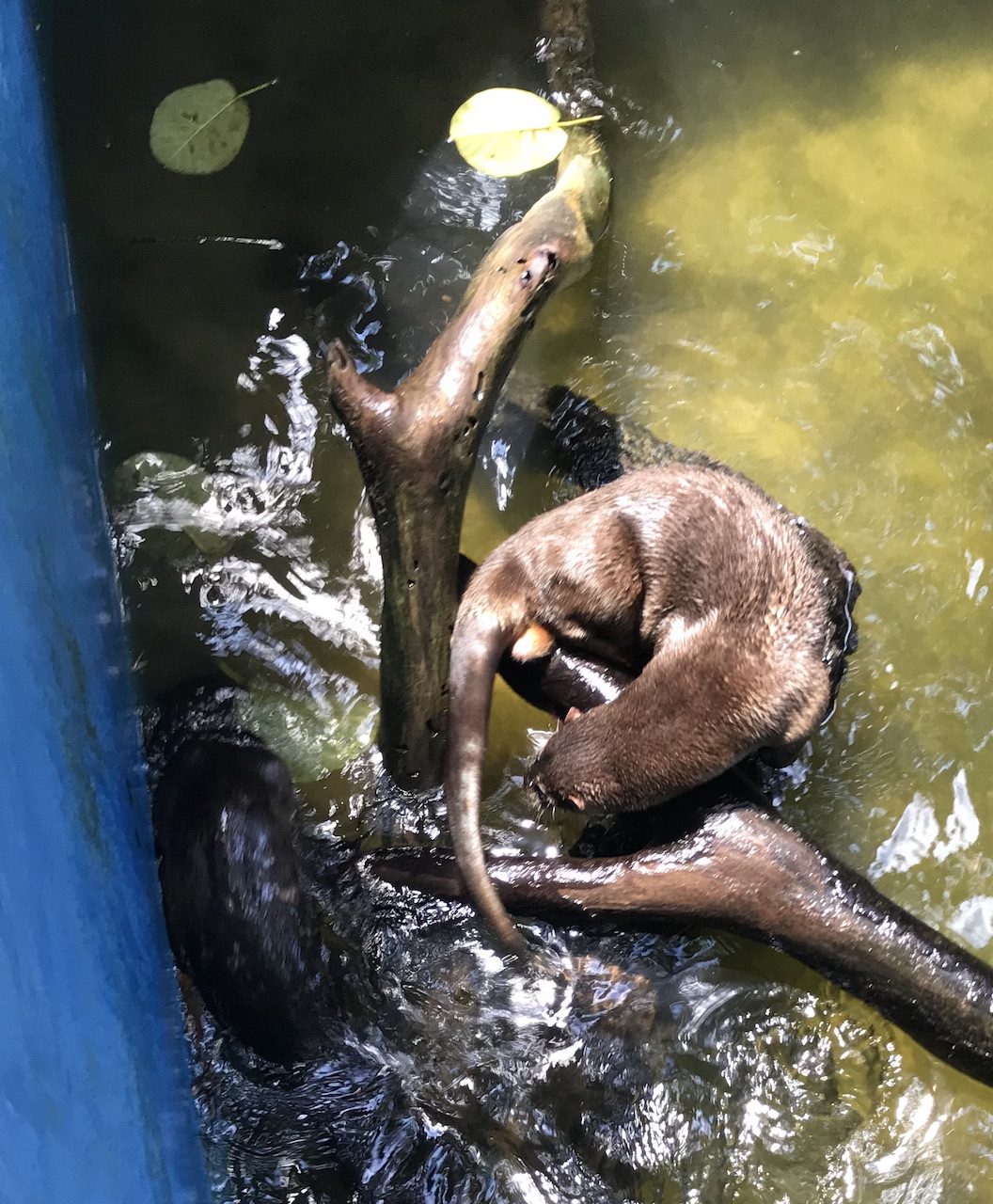
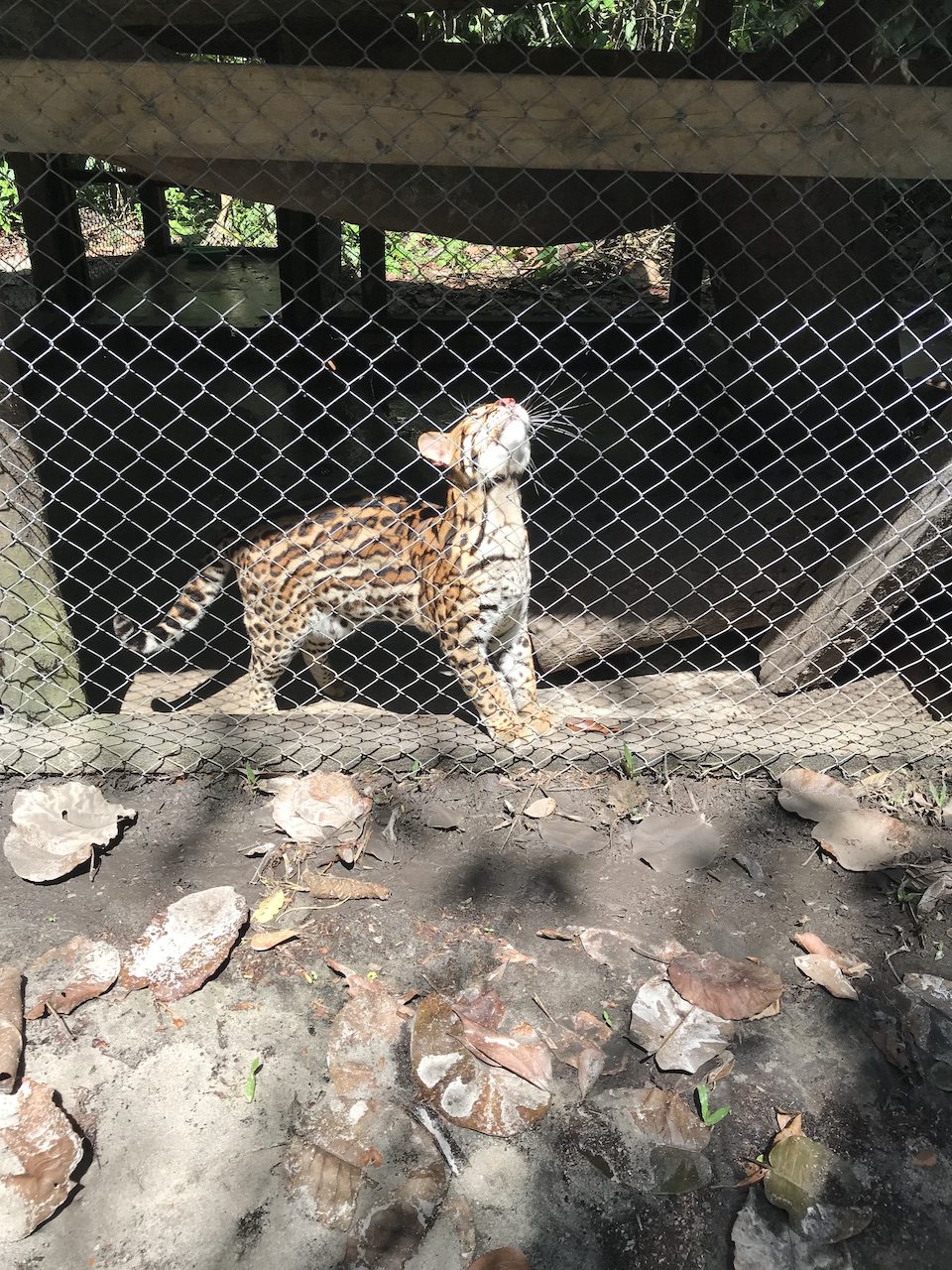
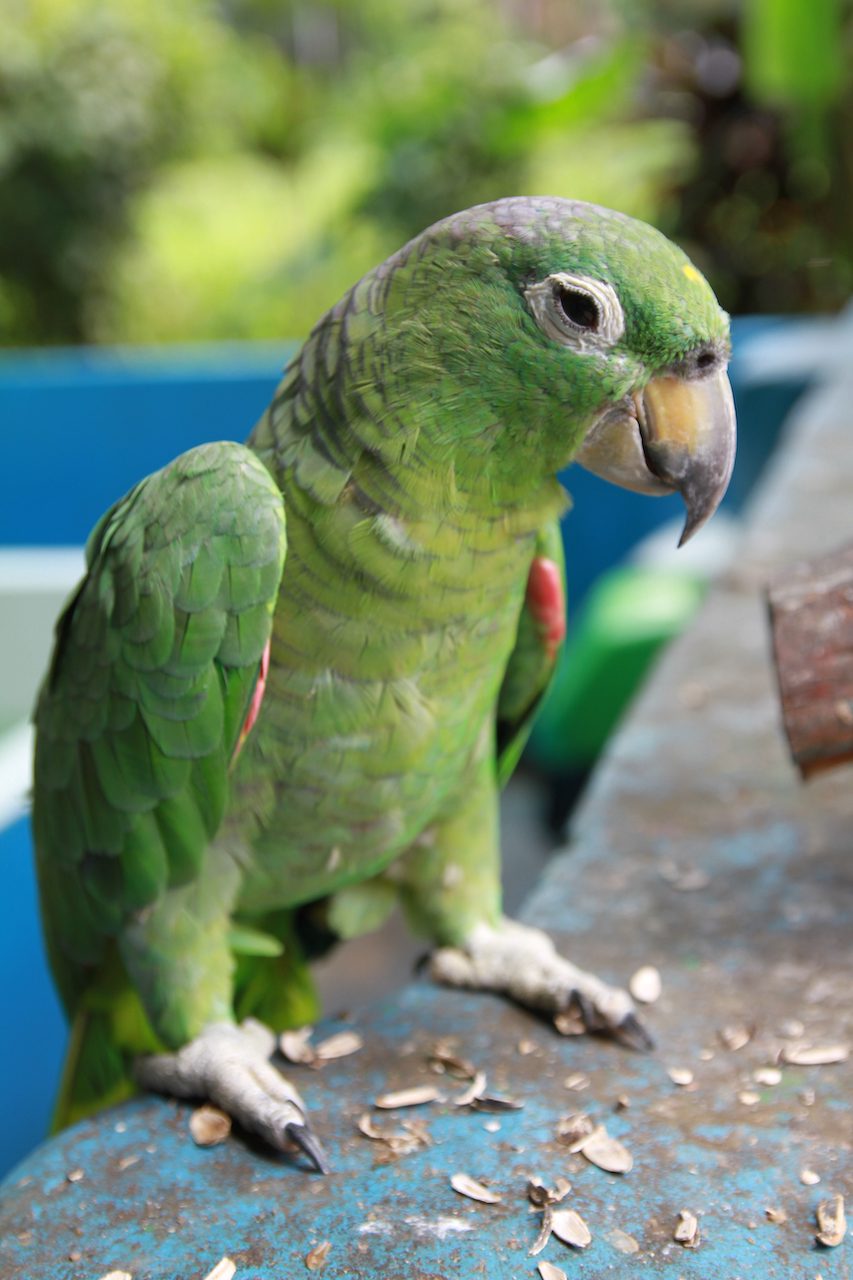
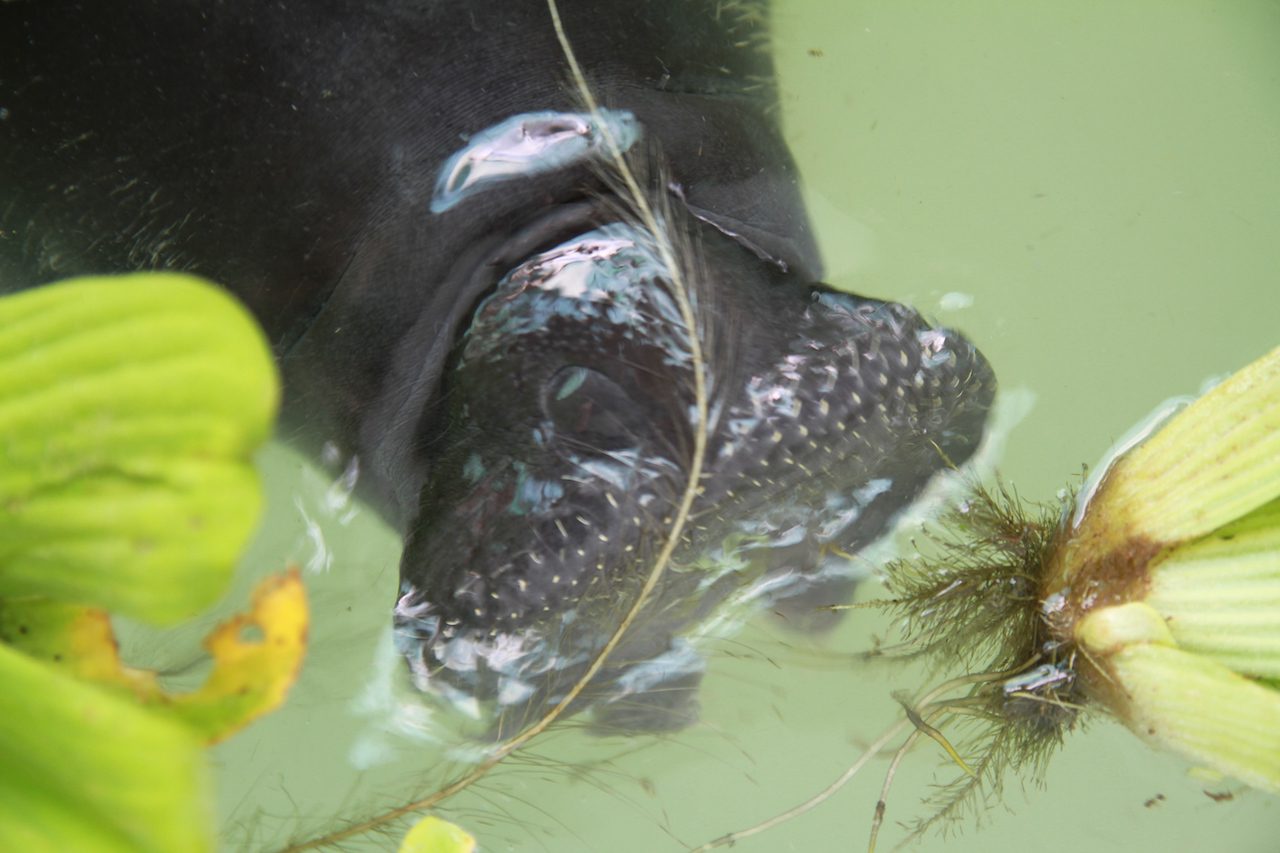

Back to: Peru
Go to: Lima
Go Back to: Amazon: Delfin 1 – Day 2
Go to: Ballestas Islands

